
























 By Jennifer Vear Hoy, MS, MS
By Jennifer Vear Hoy, MS, MS



























 By Jennifer Vear Hoy, MS, MS
By Jennifer Vear Hoy, MS, MS


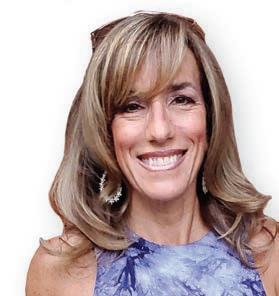

Ihavecome to realize that anything worthwhile in life requires time, patience, and persistence. Patience is indeed a gift. It helps us deal with frustrations and failures without losing our vision or becoming irritated and depressed. It helps us maintain a sense of calm when we encounter unexpected situations that upset our schedule or require us to wait for something.
When there is no time to wait and be patient, there is often no time to think, to connect to other people at deep levels, or to create lasting memories. Emotional and spiritual maturity requires patience. Impatience can easily grow into anger, harsh words, and unpleasantness toward others.
Meditation is a great way to train your mind and body to be patient. While I’ve dabbled in meditation over the years, this year I made a firm commitment to meditate on most days. Well, actually I was sort of forced into it because I am going to Dr. Joe Dispenza’s Week Long Advanced Retreat in April. It is an amazing, intensive week where you practice meditating for multiple hours a day, so I figured I better start practicing now! Dr. Joe teaches about the limitless possibilities that exist when the mind, body, and spirit of both an individual and a community merge into one field of consciousness. This event has been on my bucket list for years and I am beyond excited to go!
What I can already tell you about my experience with daily meditation is not only has my patience increased, but incredible things have been happening in my life since I started. In my meditations, I’ve been focusing on growing and diversifying our writers and advertisers, and in the last two months I’ve brought on 20 new practitioners to our magazines—that is unheard of in all the years I’ve been publishing! Unbelievable synchronicities and amazing people have come into my life in the last month. I would say give meditation a chance—even if you only have 5–10 minutes a day.
One of the interesting opportunities that has presented itself is being approached by an audience engagement company that encouraged me to consider offering a subscription package to our readers. Over the years, many people have asked to buy a subscription for home delivery, but I’ve always hesitated for a number of reasons. I wanted to get some feedback from all of you on whether that would be of interest to you. Please take the time to email me at diane@naturalnutmeg.com and let me know!





to observe patience. You don’t see nature struggling against
But back to patience—examining nature is a great way to observe patience. You don’t see nature struggling against the natural course of time to speed things up. It is a beautiful unfolding of things occurring exactly when they’re supposed to. What things in your life are you finding you lack patience with? Are you expecting too much too soon? Take some time in nature to slow down, relax, and know that everything will happen exactly when it should.
Wishing you health and happiness,

“ When there is no time to wait and be patient, there is often no time to think, to connect to other people at deep levels, or to create lasting memories.”
—Dr. Diane Hayden, PhD
Essential Naples is a quarterly lifestyle publication in SWFL for health-minded locals who need credible information on holistic health and well-being trends. Our coverage is 100% local with expert content that interests both local residents and professional integrated practitioners.
PUBLISHER/OWNER
Dr. Diane Hayden, PhD
Diane@essentialnaples.com
DIR. INFORMATION TECHNOLOGY/OWNER
Christopher Urso
Curso@naturalnutmeg.com
EDITOR-IN-CHIEF
Lori Emelander lori@naturalnutmeg.com
DESIGN DIRECTOR
Ashley Frament layout@naturalnutmeg.com
ADVISORY BOARD
Nina Azwoir, Financial
Deanna M. Cherrone, MD
Derrick DeSilva, MD
Theresa Edmunds, CHC
Betsy Opyt, RD, LD/N, CDE
Denise Pancyrz, Nutrition
Josephine Perez, DMD
DISTRIBUTION
Naples and SWFL, please contact curso@naturalnutmeg.com
Essential Naples Magazine essentialnaples.com
In keeping with our concern for the environment, Essential Naples is proudly printed on recycled paper with soy-based inks.
Essential Naples is a free publication supported solely by our advertisers and distributed throughout SWFL. Please email curso@naturalnutmeg.com for locations near you.
© 2023 by Natural Nutmeg, LLC. All rights reserved. Parts of this publication may be reproduced and reprinted, with permission. We do not necessarily endorse the views expressed in the articles and advertisements, nor are we responsible for the products and services advertised. We welcome your feedback.
The absolute best protocol to manage stress, anxiety, and depression since nutritional deficiencies affect brain function and mood? Keto! Keto generates fewer free radicals than the standard American diet and has profound effects on the gut microbiome, which plays a role in mental illness.
Multiple studies confirm the link between diet and a higher risk of depression. For example, sugar has been shown to increase depression in three different ways—increasing inflammation, decreasing the brain production of brain-derived neurotrophic factor (BDNF), and impacting the brain’s reward neurochemical dopamine.
Inflammation causes amyloid plaques that impair your memory and other cognitive capacities. The presence of plaques around a neuron causes them to die.
BDNF is a protein produced in nerve cells that acts as a fertilizer to help nerve cells function optimally, grow, and make more new neurons. Science used to believe humans were born with a finite number of brain cells, and that number decreased with age. We now know, though, that our brain can make new cells throughout life, a process called neurogenesis. In studies, people with depression have shown decreased neurogenesis. Keto increases neurogenesis with increased brain cell production.
Dopamine is a brain chemical released by neurons and can signal that an event was positive. Sugar can disrupt dopamine levels as the brain becomes accustomed to high levels.
Schizophrenia, bipolar, ADHD, Alzheimer’s, Parkinson’s, and epilepsy have shown positive responses to keto. Keto has been shown to reduce anxiety and improve binge eating and borderline personality disorder.

One of the consequences of mental health issues is that the medications prescribed usually cause weight gain, but this is not the case with keto. Most patients put on keto in a hospital situation for mental illness lost weight. And low-carb, keto-like diets are even being prescribed for cancer!
Studies have shown that poor management of mental health may drastically reduce life expectancy. A meta-analysis of worldwide research estimated people with mental illness lose between 14–32 years of potential life, with a median of 10 years lost.
Please do not ignore your brain. My intention is not to alarm but to remind you to take control of your life. I can help! Gentle coaching brings better habits.
I’m Lee Hartman, Life Coach at Lee for Lifehealth. A er serious cancer and losing friends to cancer, I am compelled by and even obsessed with health. I choose to focus on the positive and embrace health as my challenge. Teaching my body to eat its own fat by lowering insulin was a goal, as metabolic health is critical for cancer and most all disease. I love helping clients obtain the mindset to retrain their brains for success.

Email me at leehartman14@gmail.com or call 312.208.1698
to learn more!
During the past few years, the physical, emotional, and mental fatigue have been unlike anything that many of us have ever experienced. We all seem to be going through something—something that takes our breath away, steals our sleep or punches us in the gut. According to the 2022 Community Well-Being Results, in partnership with Boston University, our greatest health risk in Southwest Florida is STRESS. Is this surprising? Probably not.
What is ONE THING you can do right now to complete the stress cycle?
Simple Strategies to Complete the Stress Cycle:

• Physical activity: Try a 10-minute walk outside.
• Breathing: Inhale to “smell the flowers” and exhale to “blow out the candles.”
• Positive social interaction: A brief phone or video call or in-person chat can give us a boost.

• Laughter: Laugh therapy—even a few minutes of laughing makes a difference.
• Affection: Ask for a 20-second hug.
• Big cry: Let those big emotions out!
• Creative self-expression: Write, cook, draw.
• How do we know when we finish the stress cycle? Our body will tell us—we will feel it.

So, let’s go move our body, connect with a friend, scream in the shower, or do some doodling. These simple habits can make a world of difference…in a world with so many stressors.
Let’s support each other in our fatigue and stress. Perhaps we could even use our STRESS as a SUPERPOWER to reach out to others and serve in our community.
Summer Manning combines her passion for marketing and well-being as the Marketing Lead for Blue Zones Project Southwest Florida with the goal to help people live longer, better. She has been an executive in marketing and public relations for over 20 years. During the past three years, she became a certified Integrative Nutrition Health Coach and has been teaching simple lifestyle modifications to clients and communities for optimized wellness. She recently moved from coast to coast—from Huntington Beach, CA, to Estero, FL, with her husband and two very active sons. She is a beach lover and forest bather.
Susie Bagwell began using essential oils in 1999 to help care for her daughter’s ear discomfort. That success led to a lifelong passion and interest in the application of essential oils. After being certified to teach and pioneer an early concept in essential oil application, Susie went on to become a Certified Massage Therapist in Michigan and opened Mässusie, an Essential Oil Spa, in 2007.
Susie joined dōTERRA International in 2008 and became an active AromaTouch Instructor. Since closing the spa and moving to Florida in 2010, she teaches about essential oil application in hospitals, clinics, and massage schools. Susie’s husband, Peter, left his manufacturing business in 2015 to work with Susie, and the two opened an office where they host educational classes and events together.

One of the biggest challenges Susie faces is decadesold misinformation about essential oils. Many people believe you can’t use oils on children or cats or dogs or that essential oils should only be used either internally or externally. However, today’s certified-pure, testedgrade essential oils are very safe, and extensive research continues to reveal new secrets and modalities about using them in a more holistic lifestyle.
Susie’s current work is taking the information to the people. Her team regularly sets up booths at farmers markets and vendor events to teach people more about oils face-to-face. The Bagwells also host classes at their Fort Myers, FL office and wellness events around the country.
Susie Bagwell Founder, I Love Oils, Inc.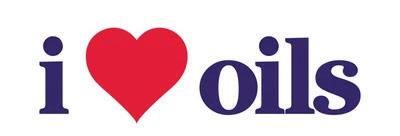 Independent dōTERRA Wellness Advocate
Independent dōTERRA Wellness Advocate
For Myers, FL • 586.604.3500
Email: susie@iloveoils.com
Website: www.iloveoils.com
Instagram: iloveoils
See ad on page 21 >
Catherine Riley is a Natural Therapist from the UK with over 30 years of helping people reach their full potential by using a variety of treatments, including meditation, yoga, craniosacral therapy, energy healing, health and nutritional coaching, and the roXiva.
The roXiva is a type of light and sound therapy that offers healing benefits to help people with conditions such as Seasonal Affective Disorder, PTSD, depression, insomnia, anxiety, fear, stress, and more. This non-invasive, natural therapy is becoming increasingly popular among spagoers, and with good reason. The roXiva is a safe and effective way to improve people’s mood, energy levels, and overall well-being. Clients report it is possible to achieve altered states, hypnosis, deep flow, zone states, and even outof-body experiences.
During the light experience, the brain will react like the brain of people during deep meditation to reach Theta states (the magical space between wakefulness and sleep) and experience a variety of internal images or colors to reach inner peace and contentment.
It is important to note that roXiva is not a medical device; rather, it is a therapeutic lightguided meditation. It is not in competition with nor a replacement for pharmaceutical drugs, clinical therapy, or any other medical intervention. It is a Journey into Consciousness
Catherine RileyNatural
Therapist239.375.8690
and Founder • Miracle Mind Magic

• 320.248.8854
Email: miraclemindz@gmail.com
Website: miraclemindmagic.com
“We may not be responsible for the World that created our Minds, but we can take responsibility for the Mind with which we create our World.”

As a Certified Natural Chef and graduate of the Nutrition Therapy Institute in Denver, Beth McCarthy is delighted to share her love of nourishing food with you. She is especially passionate about “food as medicine” and how food can strengthen, protect, and heal. Together, you’ll create healthy eating patterns that empower your choices, clean up your palate, and nourish your life.
Beth’s goal is to educate, motivate, and inspire individuals, couples, families, corporations and communities to:
• Adopt a whole-foods based diet—think unrefined, fresh, in season, organic, unprocessed, humanely raised and non-genetically modified
• Engage in cooking with renewed inspiration, creativity, and commitment to health
• Honor the kitchen as a sanctuary—a joyful gathering space to nourish yourself, family, and friends
• Fall in love with food—one delicious and mindful bite at a time! Whether you’re struggling with a health condition requiring a change in diet and lifestyle, managing a hectic work schedule or family life without time or energy to cook, frustrated by body image and weight issues, or simply want to learn new ways to cook healthier and more creatively, let Beth help educate, inspire, and support your quest for living a healthy, vibrant life.
Beth McCarthy is the founder of Joyful Wellness, a healthy lifestyle, nutrition and mindful living consulting company. She is a healthy lifestyle coach, food-as-medicine nutrition chef, yoga therapist, and women’s wellness retreat leader.

Iwasbrought up like most girls in my generation— people-pleasing, perfectionistic, and meek. Seen and not heard. Until cancer changed my purpose.
Along with my diagnosis of serious cancer, my mom abandoned me. My friends, however, were supportive, kind, and generous. Life lesson there!
It also opened my world to a new realization of self.
It’s not possible to reach your potential if deep down you’re ashamed of who you are. Putting myself out there required shamelessness; I had to learn to control my emotions. My path was the beginning of loving myself and I can help you, too.
Stress comes from your ideas of what you believe is happening, not what is actually happening. Working on your thoughts and beliefs creates an authentic person. I can help with tools to teach you to trust yourself, and I will help you realize the power of believing in yourself.
The journey to confidence is much easier with metabolic health. Proper metabolism gives you a sharper brain and energy to remodel your life, and proper diet improves mental health. You can’t “see” good health but you see evidence of it—good skin and muscle, no excess body fat, and so on.
I can help with a physician-approved diet designed for longevity, ideal weight, healthy hormones, and energy. Because of my history with cancer, my diets are recommended for the prevention of diabetes, heart disease, Alzheimer’s, and cancer—weight loss is an added bonus! Work with me, and I will help you look better and feel better.
Lee Hartman
Ihave been in the functional/holistic world for over 10 years. Practicing as a Licensed Dietician Nutritionist and a Certified Nutrition Specialist, I have been helping people get back to feeling well via nutrition and lifestyle interventions in South Florida. Recently I have partnered with friend and colleague Kaitlyn Haley, LDN, two life coaches, and a personal trainer to form Live Beyond Well: A Holistic Women’s Collective. We use functional testing to provide individualized treatment plans for each client while creating a safe space for healing and growth with one-on-one biweekly practitioner meetings, course offerings, and a private online community.
We believe in a holistic approach that aims to support the body, mind, and soul. To join our subscription-based services, we begin with a Fundamental Assessment. The Fundamental Assessment allows each of us to meet with the client and develop a personalized plan. If the client would like to continue with us, we offer 12-month subscriptionbased options at an affordable rate.
I am passionate about inspiring people to take care of themselves and in connecting people because it takes a community to heal. After many years of seeing clients individually through the years, I saw a need for a change. Our collective of practitioners works together to support each client. We each have a unique perspective and our own tools to best support their journey. Live Beyond Well was formed with the intention to create an optimal space for clients to heal via personalized plans, education, and community support.
Jennifer Barrell, MS, CNS, LDN Functional Dietician and Founder • Live Beyond Well Naples, FL 954.661.0435 livebeyondwell.org/ www.rosemallowmarket.com/Now that I’ve got your attention…. Why in the heck would I say, “Golf lessons don’t work”?
Because they don’t—they don’t work IF you are over the age of 60 AND you’re taking lessons to achieve one of the following three goals: increase your distance off the tee, shoot more consistently, or be able to play more frequently.
That’s why you generally leave your lesson more frustrated than when you got there—because your golf pro is trying to get you to do something your body isn’t physically able to do! I mean, seriously— if you’re over the age of 60, why any golf pro would ever compare your swing with one of the pros on the tour just blows my freakin’ mind!

Our bodies move very differently after the age of 60 than they do before age 60, so why in the heck would we use a swing from a pro who’s between 20–40 years old, practices 40+ hours a week (how many hours a week do you practice?), and has an entire team to help him do his job?
This isn’t meant to be a cheap shot at the golf coaches out there—it’s not their fault. They’re experts on technique and the golf swing—NOT biomechanics. When you can’t physically get into certain positions, they simply don’t have the knowledge to re-educate your body to physically get you there.
That’s where The Berman Method of Golf Performance comes in! The Berman Method was developed specifically for aging golfers struggling with losing distance, shooting inconsistently, or simply not able to play as frequently as they’d like due to nagging aches and pains. The Berman

Method focuses entirely on training you to recruit and activate your big power muscles (glutes and core) and keep them firing through the entirety of the golf swing. It also focuses on training aging golfers to improve their turn using the correct body parts (hips and upper back) to help increase shoulder turn in the backswing and clear your hips in the downswing.
The most common thing I hear on the first session I have with new clients is “WOW. So that’s what that feels like...” If you don’t know what it’s supposed to FEEL LIKE to load your right leg, fire your core and glutes, generate a quality shoulder turn from the right area, then reverse all that and clear your hips so you can get back to and through the ball, it’s close to impossible to have a consistent swing. And if you don’t have a consistent swing, you can’t expect consistent results, which ultimately leads you to leave your golf lessons more frustrated than when you started.
If you’re over the age of 60 and want to increase distance off the tee, shoot more consistently, and be able to play more frequently, check out BermanGolf.com! Don’t accept that garbage golf is just a normal part of getting older. Over the years, we’ve helped countless aging Naples golfers get their bodies moving better, regain confidence and competitiveness, and, most importantly, regain their love of the wonderful game of golf!
For more information, please check out my book, The Berman Method, on Amazon, listen to my podcast, “The Long Balls Golf Podcast,” or search “The Berman Method” on YouTube, and enjoy tons of great, free content!
Dr. Jake Berman, PT, DPT, is a physical therapist and owner of Berman Golf, where they focus on helping aging golfers increase distance off the tee, shoot more consistently, and play more frequently. If you’re not ready to accept “getting old” as an excuse for a poor golf game, call Dr. Berman at 239.431.0232 to take advantage of a FREE 30-minute taster session! See ad on page 25 >

“I mean, seriously—if you’re over the age of 60, why any golf pro would ever compare your swing with one of the pros on the tour just blows my freakin’ mind!”
—Dr. Jake Berman, PT, DPT


 By Lynn Brewer
By Lynn Brewer
Magnesium is an essential micronutrient that plays a role in mental health and mood. It helps with depression, anxiety, ADHD, and other conditions.
Feeling tense, tight, anxious, or otherwise wound too tight? It might be a mineral—magnesium—your mind is missing. Magnesium plays a starring role in regulating muscle and nerve function. Low magnesium levels are associated with conditions like insomnia and migraines, as well as metabolic problems like diabetes and heart disease.









One of the key pathways magnesium influences is the glutamate receptor site. Glutamate is an excitatory neurotransmitter that plays a critical role in normal brain functions. In excess, it can create overstimulation of cells that may lead to damage and changes in mood like anxiety or depression. Magnesium binds to the receptor protein on cell membranes and blocks glutamate from binding there. This is what leads to magnesium’s antidepressant-like effects. Glutamate imbalance can negatively impact ADHD symptoms.
Magnesium works with other minerals, potassium, vitamin D, B12, and more to keep you healthy inside and out. It plays a crucial role in over 300 plus processes that take place within your cells, including helping you to sleep, feel energized, and maintain a healthy immune system. Low magnesium levels are associated with conditions like insomnia and migraines, as well as metabolic problems like diabetes and heart disease. Evidence indicates that insufficient magnesium can also lead to increased anxiety and depression.




Low magnesium is a relatively common occurrence within our society today due to the low magnesium we obtain from our food sources and the fact that our bodies will only absorb so much from the magnesium taken orally. Fatigue is often the first and most notable sign of magnesium deficiency. Because it’s a very broad system, most people neglect to connect it with magnesium.
Low magnesium levels may also cause muscle pain, eye twitching, restless leg syndrome or leg cramps, difficulty sleeping or insomnia, panic attacks or anxiety attacks, migraine headaches, worsening premenstrual cramps, and irregular heartbeats, along with many autoimmune diseases.
Floating has been proven to increase the magnesium in our bodies up to 27% with 60 minutes in a float session. When using a float tank, magnesium is absorbed through the skin due to natural molecular diffusion. The body optimizes the levels of magnesium, so there is no overload effect from floating in the salts for extended periods. Sulfates serve a wide variety of functions in the body, playing a vital role in the formation of brain tissue, joint proteins, and the mucin proteins that line the walls of the digestive tract. Sulfates also stimulate the pancreas to generate digestive enzymes and are believed to help detox the body’s residue of medicines and environmental contaminants.










“Magnesium works with other minerals, potassium, vitamin D, B12, and more to keep you healthy inside and out. It plays a crucial role in over 300 plus processes that take place within your cells, including helping you to sleep, feel energized, and maintain a healthy immune system.”
—Lynn Brewer


 By Theresa Edmunds, CHC
By Theresa Edmunds, CHC
















elbow, as it’s commonly called, is a painful condition that occurs when the tendons in the elbow are overloaded. This happens due to repetitive motion of the wrist and arm. Considered an overuse and strain injury, it occurs when repeated contraction of the forearm muscles takes place. We use these muscles to straighten and raise our hand and wrist. As strain occurs, pain ensues.


Racquet sports are the most common source of tennis elbow. With the popularity of pickleball, it could also call be called “pickleball elbow”—especially here in Naples!
With tennis and pickleball, it’s most often the movement of the backhand stroke repetitively that is responsible for this injury. The repeated motions and stress to the tissue can also result in a series of tiny tears in the tendons that attach the forearm muscles to the bone at the outside of the elbow.



With lateral epicondylitis (the technical name for tennis elbow), pain usually radiates from the outside of the elbow into the forearm and wrist. Not only is pain present, but weakness is often an issue as well. This can make it difficult to shake hands, hold an object, turn a doorknob, start a car using a key, or hold a coffee cup. The pain generally occurs where the tendons of the forearm muscles attach to the bony bump on the outside of your elbow. The pain is also known to spread down the forearm and sometimes to the wrist.

It may come as a surprise to know that racquet sports aren’t the only cause of tennis elbow. Many other common arm motions can cause this injury, including the use of certain tools, painting, and food prep, especially cutting meat. This means that certain occupations are more prone to tennis elbow, including painters, plumbers, carpenters, butchers, and chefs. Anyone whose job includes these types of motions can be at risk for this condition. Even repetitive use of a computer mouse can cause tennis elbow.
Tennis elbow is also more common after the age of 30—especially for those engaging in racquet sports or the aforementioned careers.

















As the muscles in the forearm are overworked and shortened, the tendons that attach to the elbow become strained. Using the robotic arm and applying varying percentages of pressure at programmed intervals, we can relax the muscle. This gentle but sustained pressure relaxes and softens the tissue, lengthening the fibers of the muscle, and returning the muscle to its natural shape. The relaxation in the muscle alleviates the tension on the tendon. As the tendon tension resolves, it takes pressure off the joint. Mobility is then restored, and pain is alleviated. Using this innovative technology to release tension, tennis elbow can be resolved along with many other conditions. The robotic arm is uniquely suited to apply the right percentage of pressure to a muscle allowing for the rebalancing of muscles. With 26 placements, many issues can be addressed, from back and neck pain to joint pain in shoulders and knees and even plantar fasciitis and carpal tunnel.
Theresa Edmunds is a Certified Health Coach and co-owner of Precision Robotics Muscular Therapy. She is passionate about helping people feel better inside and out. In addition to bringing this patented muscular technology to the Naples area, she enjoys coaching individuals and families toward a healthier lifestyle. To make an appointment for Robotic Muscular Therapy or for a free 20-minute health coaching session, contact Theresa at 239.778.6842 or theresa@theresaedmunds.com. See ad on page 31 >
Testimonial:







“I had been suffering from tennis elbow for three months. After two brief Robotic Muscular Therapy treatments, my symptoms subsided. I have since revisited for plantar fasciitis and have had similar success. I strongly recommend the Precision Robotics approach as traditional therapies like physical therapy and stretching exercises yielded unsuccessful results.”
—JeffHolmes


 By Susie Bagwell
By Susie Bagwell
As more attention has been given to our need to address our mental health, the world has risen to the challenge with unprecedented pressure. Could it be that one of the more powerful solutions to help us feel our best is one we’ve had with us all along? The study of aromatherapy and the expanded use of essential oils continues to provide us with a wide variety of appealing and natural mental health solutions.
Essential oils are becoming known for more than just helping us to create a calm and relaxing atmosphere. Advanced science is helping to test for contamination and adulteration, resulting in the purest therapeutic grades. Universities have released protocols for sensory training to help people get their sense of smell back after certain infections. Responsible sourcing and acceptable safety and usage information also make quality essential oils readily available.
Learning some of the common benefits of certain oils, their aromas, and their topical applications can give you a head start in choosing the right products. Many of these safe and pure essential oils can be used aromatically, topically, and sometimes internally.
If you are using essential oils topically, it’s a good idea to put them into a roller bottle with a carrier oil, such as fractionated coconut oil. The carrier oil often helps hold oils to the skin that might usually evaporate quickly. Roller bottles are also a convenient way to keep oils with you as you move around, ensuring you’ll have them when you really need them.
Another easy way to get started with essential oils is to ensure you have a high-quality ultrasonic diffuser. Diffusers sometimes use water to help lift the oils in the air and can often run for one, two, or more hours. An advantage of a diffuser is that you don’t have to have the oils touching your skin. These are airborne—you simply breathe them in while the diffuser is running.
Blends are a powerful tool for getting the most out of your essential oils. Much like the combination of peanut butter and chocolate, essential oil blends can enhance one significant ingredient with another. Consider how the following blends might help someone dealing with common negative emotions:
: A fragrant and positive reminder that you don’t have to be perfect to find peace.
“Blends are a powerful tool for getting the most out of your essential oils. Much like the combination of peanut butter and chocolate, essential oil blends can enhance one significant ingredient with another.”
—Susie Bagwell
•Suggested essential oils: Clary Sage, Frankincense Labdanum, Lavender, Marjoram, Spearmint, Vetiver, and Ylang Ylang.
•Encouragement Blend—Mints and Citrus: Unleash your creative powers and find the courage that comes from believing in yourself.
•Suggested essential oils: Basil, Clementine, Coriander, Melissa, Peppermint, Rosemary, Vanilla, and Yuzu.
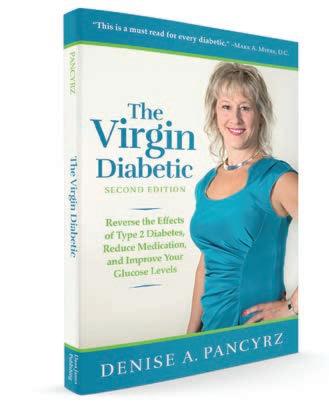
•Uplifting Blend—Citrus and Spices: A cheerful boost of happiness and positivity when you’re feeling down to brighten any moment of your day.
•Suggested essential oils: Cinnamon, Clove, Ginger, Lemon Myrtle, Nutmeg, Star Anise, Vanilla, Wild Orange, and Zdravetz.
• Inspirational Blend—Spices, Herbs, and Grasses: Helps rekindle excitement in your life.
•Suggested essential oils: Cardamom, Cinnamon, Damiana, Clove, Ginger, Jasmine Sandalwood, and Vanilla.





•Renewing Blend—Herbs, Grasses, and Trees: To help you discover the liberating action of forgiving, forgetting, and moving on.




•Suggested essential oils: Arborvitae, Bergamot, Citronella, Juniper Berry, Myrrh, Nootka Tree, Spruce, and Thyme.
•Comforting Blend—Trees and Florals: To help you close the door on sadness and take your first steps on a hopeful path toward emotional healing.
•Suggested essential oils: Amyris, Frankincense, Labdanum, Osmanthus, Patchouli, Rose, Sandalwood, and Ylang Ylang.






Aromatherapy is the use of fragrances to manage emotions and enhance feelings of well-being. Scientific study of aromatherapy’s influence on emotion confirms what people of the world have known for centuries: The delicate and complex aromatic compounds of pure essential oils can be used effectively to help balance our emotions and brighten our mood.










Susie Bagwell is a certified massage therapist, Blue Diamond dōTERRA Wellness Advocate, AromaTouch application instructor, and former owner of Mässusie Spa. Her 20+ years of experience have helped her become an expert in the use of essential oils, and she shares that knowledge with hospitals, medical offices, and wellness events. Work with her remotely or attend a class at her Fort Myers, FL, Training Center. To schedule a wellness consultation, call or text 586.604.3500 or visit www.iloveoils.com. See ad on page 21 >


“Body and soul form a continuous and inseparable entity, a unified system that defines this particular human being as an individual in his/her social interactions, psychological and
Ihadthe exciting opportunity to experience a Bio-Well Energy Wellness Scan with Zel Rau last month. The Bio-Well Energy Wellness Scan is a revolutionary tool based on the Electro-Photonic Imaging or Gas Discharge Visualization (GDV) technique (Kirlian effect) made especially for the express assessment of the energetic state of a person. Interpretation of the scans is based on acupuncture points, Ayurveda, and much scientific and clinical research from over the last 20 years. Bio-Well has been developed by an international team led by Dr. Konstantin Korotkov and designed to bridge the gap between logical Western science and the intuitive science of the East.
Energetic healing and activities are a considerable part of guiding your body to a better state of health. We must remember that energy can change a physical system and how it operates. So, it’s vital to start working on your energy field and energy centers regularly with an open heart, mind, and set intention.
The scan’s purpose is not to diagnose or treat symptoms of any medical problem but to prevent health abnormalities early on. With Bio-Well, we can measure the body’s potential energy reserve and the state of a person’s energy field. When a scan is taken, a high-intensity electrical field stimulates the emission of photons and electrons from human skin, and powerful imaging technology

then captures the emissions of each finger. The images have been mapped to various organs and systems of the body and reflect the state of the energy meridians as defined in Traditional Chinese Medicine. Bio-Well also provides a display of the size and alignment of each chakra.
The scan analyzes every system and organ in the body and shows you the state of your energy field within each system or organ. As you probably know, disease starts first in your “energy body”— the energy field that is 3–8 inches around your physical body. Before any disease manifests itself physically in your body, it can be detected in your energy body. That is why it’s so important to utilize a Bio-Well Scan to see exactly where energy is low or negatively affected in each organ system.
If you’ve never had a Bio-Well Scan, this is something I strongly encourage you to explore. I left my session with Zel with a deeper understanding of what systems and organs in my body were low in energy and needed healing. Scans are very simple and noninvasive—you simply put each finger into the machine, it takes a reading, and Zel then analyzes the report and shows you each area that needs attention. I was not surprised to see that my immune system had a low energy reading because I had just been sick a month prior to my analysis. Also, four days before my analysis, I had recently traveled and flown on a plane, which I’m sure stressed my immune system.

physical realities.”
—Dr. Konstantin Korotkov
The other system that showed a low energy reading was my cardiovascular system. Zel asked me if I was doing any cardiovascular exercise, and funny enough, I had not been for over a year, as I’ve been focused on an intense weight-lifting program. She told me that my cardiovascular system needed a boost and to incorporate more of that, which I’ll be doing.
One of the most intriguing things the analysis shows is your biorhythm report, which shows you when you are at your peak physically, mentally, and emotionally for each month of the year. This was absolutely fascinating to me because you can literally plan what times of the year would be good for learning new things, changing your exercise routine, or taking breaks, and why you may be more affected emotionally by things happening in your life.


Zel reviewed my entire analysis and then began the healing part of the session, where she balances your energy centers, clears your biofield for a better flow of energy, and feeds the body the frequency and sound it needs to harmonize.












You lie on a massage table and relax while meditative music is playing. If you happened to read my article in the Winter issue about my first session with Zel, you remember that my deceased father came through, which has never happened with any other intuitive I’ve worked with. Well, he showed up again, and Zel told me he had picked the music for me.
Within minutes, I knew this to be true because I heard ocean waves and what sounded like a seagull in the distance. My mom told me many years ago that whenever she saw a seagull it was my father letting her know everything was OK. After the session, I left feeling lighter, joyful, and peaceful, and with a knowing that yes, everything is going to be OK.


Energy Spa is owned and operated by Zel Rau. Zel was first exposed to Reiki energy work 12 years ago, and soon after, she became certified as a Master Reiki Healer. As she is still growing and expanding her knowledge of Biofield Tuning, she is beyond excited to bring it to you. Reiki and Biofield can be performed in-person and remotely, making it available to anyone interested in trying it, even from the comfort of their home. Text 219.381.9777, email bekind111@yahoo.com, and visit zelrau.com for more information. See ad on page 31 >






 By Jenni Berman, PA-C, CPT, CNS
By Jenni Berman, PA-C, CPT, CNS
September is National Suicide Awareness
Month, but every month should have a focus on mental health, which is more prevalent than you may realize. According to recent studies:
• 1 in 5 adults in the United States lives with mental illness
• In 2020, nearly 52.9 million adults were living with mental illness
• In 2022, 40 million adults in the United States have anxiety alone—over 18%
• Youth mental health is declining
These numbers are astronomical. The good news is that it is preventable, treatable, and curable with the right meal plan. Now, you’re wondering, “What does food have to do with anxiety, depression, bipolar disorder, schizophrenia, or other mental health disorders?”
Let’s dive in to find out.
• The Gut: Starts at the mouth and involves the entire gastrointestinal tract down to the anus. Food goes in and should go out as byproducts. In the meantime, the intestinal tract has an intestinal lining that should be tight, aid in digestion, and absorb nutrients.
• Villi: Intestinal finger-like structures should absorb our nutrients and move particles through.




• Tight Junctions: The intestinal barrier that should keep particles, toxins, and bacteria IN the intestinal tract so we can expel the byproducts.
The intestinal lining gets damaged over time due to stress, medications, trauma, and our food. Certain foods are inflammatory, and these are specific for each individual. Generally speaking, gluten, dairy, soy, corn, and almond are the top inflammatory foods. Some individuals have other sensitivities or allergies, some are affected by all these food groups, and some are only affected by one! It is specific to the individual.
Food sensitivities and allergies can be assessed via blood testing, which tells the antibody (inflammatory marker) reaction to the foods being tested. This is an objective way to see what your body is reacting to and what it is tolerating. We can use the blood test results to further evaluate gut health, vitamin and nutrient absorption, mental health, and metabolic function.
Food sensitivities and allergies can present as abdominal pain, bloating, irritable bowel syndrome, migraines, and joint pain…but they can also present as anxiety, depression, bipolar disorder, anger, sleep disturbance, and other mental health disorders!
Remember that tight junctions are the barrier of the intestinal lining, and with damage to our gut lining, the tight junctions open, and gaps become present. This means toxins, bacteria, and food particles can seep into our tissues and bloodstream, which is abnormal. The immune system reacts to this by developing antibodies, or
inflammatory markers, which attack our organs. The immune system also reacts by creating cytokines, which are a particular type of inflammatory marker that affects our organs but can also cross the blood-brain barrier, reaching the brain. Cytokines in the brain affect our chemical balance.
Think about a sprained ankle—inflammation around it causes it to be swollen, painful, and not work efficiently, and the ligaments of the ankle are weak after a sprain. The inflammation on the inside of your body and in the brain is similar to the inflammation in the ankle…but worse.
When the gut lining is damaged, not only are these toxins getting into our tissues and bloodstream, but the development of cytokines allows the inflammation to reach our brain. In addition, we’re also not absorbing nutrients properly. This leads to vitamin deficiencies, and vitamins are vital for our brain function and chemical balance of the brain.
Let’s talk about a few specifically:
•Omega 3: Very important for proper blood flow to the brain. Efficient, equal blood flow to the brain is vital for chemical communication, performance of cognitive tasks, and memory.
•Vitamin D: Protects nerves, regulates the immune system, and correlates with mood stabilization.
•Vitamin B12: Vital nutrient to protect the nerves, producing brain chemicals and preventing brain shrinkage
•Magnesium: Important for protein building, blood sugar stability, blood pressure stability, nerve transmission, calming, and regulating mood.
•Folate: Vital for red blood cell formation, healthy cell growth, and proper serotonin levels.
•L-Theanine: Aids mood regulations and stress reduction.
•Amino Acids: Essential for hormones and amino acids that increase serotonin and reduce psychological stress.
And speaking of vitamins: How do we obtain these vital vitamins and nutrients? Naturally is, of course, the best option—however, it isn’t always realistic.
Obtaining nutrients and vitamins through our food is the BEST way, though sometimes we cannot consume enough of the right foods for the adequate amount of nutrients, and sometimes we don’t absorb the nutrients due to our gut damage. Supplementation can also benefit many individuals.
Let’s Talk about Food
Blood sugar is critical for brain function, hormone balance, and cellular recovery. Protein in the diet can provide quality vitamins and minerals but is also a key component in stabilizing blood sugar. Did you know that irregular blood sugar levels can increase cortisol (stress hormone) and cytokines (inflammation), which can augment anxiety, depression, bipolar disorders, and several other mental health disorders? However, it can be controllable with adequate protein in our diet. Check out some of the foods which can help to promote blood sugar stability and stabilize mental health:
•Green, leafy vegetables and other cruciferous vegetables (broccoli, cauliflower, cabbage, Brussels sprouts) are essential in providing many of the vitamins mentioned above.
• Lean, unsaturated proteins (chicken, fish, turkey, pork loin, plant-based proteins, quinoa, tofu) are also helpful in providing essential vitamins for brain function, hormone control, and blood sugar stability.
•Fish like salmon, tuna, and sardines support vitamin levels, healthy brain development, and bone density.
•Nuts and seeds—in moderation!
•Theanine and branch chain amino acids— through proper supplementation. Improving and stabilizing mental health needs a full-body approach. We cannot expect long-term (positive) effects by treating just one area. We cannot expect long-term (positive) effects without looking from the inside out. Start with your food and your gut.
This article is not to treat or to make treatment recommendations. You should always consult your provider before making any dietary or supplement change.
Berman Health and Wellness is a Functional Medicine Center that helps individuals reach their goal weight and optimize their gut health while avoiding needless medications and achieving the highest quality of life imaginable.

Focusing on and optimizing gut health is vital to protecting our brain, metabolism, hormones, and longevity. Call 239.431.0232 or visit www.bermanpt.com/wellness to learn more.
See ad on page 23 >
“Did you know that irregular blood sugar levels can increase cortisol (stress hormone) and cytokines (inflammation), which can augment anxiety, depression, bipolar disorders, and several other mental health disorders?”
—Jenni Berman, PA-C, CPT, CNS
Spine pain is extremely prevalent in the United States. Low back pain is the number-one pain-related diagnosis in our country, and it’s the number-one cause of long-term disability. It is also the number-one reason for the long-term use of opiates and addictive painkillers. Neck pain is the number one chronic complaint for those who have suffered a car accident injury or whiplash. Sixty-five percent of people who have suffered whiplash never fully recover and have long-term symptoms. Conventional medicine basically has no answer besides painkillers, steroid injections, nerve ablations, and surgery.
Very few physicians are trained to treat and rehabilitate the spine apart from physical therapists and chiropractors. Medical practitioners who also train in regenerative therapeutics and biologics may also offer a better-than-average outcome for patients. At Feel Amazing Institute, we have advanced training in the diagnosis and treatment of your spinal complaints. We combine chiropractic, physical therapeutics, rehabilitation, and regenerative medicine to get the best possible outcomes.
In 2003, Feel Amazing Institute was the original clinic to offer nonsurgical spinal decompression therapy. After 20 years of experience, becoming board-certified in functional neurology, and becoming medically integrated and trained in regenerative procedures, our results are exceptional. To this day, we are the only clinic in southwest Florida to combine these many modalities to enhance the outcomes for the community of Naples.

The source of spine pain and other complaints varies from one person to the next. The source of

















pain may be the bones, joints, discs, ligaments, or muscles. Ultimately these structures cause pain due to neurological irritation or damage.
The Ultimate Spinal Care Program should include advanced technologies performed in a physician’s office and treatments for self-care at home. It can include different types of chiropractic treatment, some of which do not involve manipulation of the spine but may include very gentle techniques. Treatment may include advanced technologies like spinal decompression therapy, shockwave therapy, class-4 lasers, pulsed electromagnetic fields, regenerative treatments such as platelet-rich plasma, and cellular therapies that involve an injection of growth factors, including products containing stem cells.
Feel Amazing Institute has six providers: a supervising medical doctor, two nurse practitioners, and three chiropractors. We also have four chiropractic assistants who perform our physical therapies. Each morning our entire office meets to discuss each new case from the previous day. We put our heads together and come up with the best possible prescription for treatment based on our over 120 years of combined experience.
We feel it’s usually not ideal to rely on just one type of treatment, such as chiropractic, to stabilize and strengthen the spinal ailment. We will often combine several of our modalities to get the best improvement as quickly as possible. We want the condition to heal as thoroughly as possible, so our clients do not suffer chronic problems for their lifetime, robbing them of their happiness and joy, and in the long run, costing more than getting the job done right in the first place.
These are prescribed on an individual basis after a thorough assessment.

“We feel it’s usually not ideal to rely on just one type of treatment, such as chiropractic, to stabilize and strengthen the spinal ailment. We will often combine several of our modalities to get the best improvement as quickly as possible.”
—Dr. Richard Hiler, DABCN
experience reduced pain, lower dependency on medication, improved activities, improve sleep, and more joy. We only accept patients who we truly feel we can help and will let people know upfront if we feel there is a better option elsewhere.
Feel Amazing Institute is equipped to diagnose and help a wide range of conditions that include:


• Severe or chronic spine pain
• Peripheral neuropathy
• Shoulder, elbow, or wrist pain
• Hip, knee, ankle, or foot pain
• Headache, dizziness, vertigo, or balance problems
• Disc bulge or herniation, sciatica, or stenosis
• Auto accident and whiplash injuries


For more information or to schedule a free telephone consultation or for a free informational seminar call today!
Dr. Richard Hiler, DABCN, is a board-certified chiropractic neurologist with more than 15 years of success and clinical experience. Dr. Hiler and his medical team offer a complimentary telephone consultation. For questions or to schedule an appointment, contact the office at 239.330.1000. www. FeelAmazing.com. 3031 Airport-Pulling Rd N., Naples. See ad on page 23 >








 By Lisa Sprague, MSS, PTA, LMT and Susan LoManto
By Lisa Sprague, MSS, PTA, LMT and Susan LoManto
“Until recently, those microvessels weren’t given much attention in the medical field. Due to their tiny size, they couldn’t be measured, couldn’t be operated on.... There has been no instrumentation small enough to evaluate and mitigate any issue with the glycocalyx— until now!
Lisa Sprague,Ever heard of the glycocalyx? It comes as no surprise if your answer is “sort of”—or even a resounding “no.” But it’s critical to understand what it is, since it happens to be the most important part of our cardiovascular system and the literal foundation of our overall health! You may look and even feel healthy on the outside, but inside your microvascular system, a completely different situation could be developing.
Put simply, the glycocalyx is the Teflon-like lining of all our blood vessels. It is made up of a microthin gel and is the largest organ in the body that protects the inside walls of our entire circulatory system. Our blood vessels are not just hollow tubes that our blood flows through—there’s so much more going on inside.


The integrity of the glycocalyx is extremely important. We have over 60,000 miles of microvessels that comprise 99% of our vascular system. At the “sweet spot” of nutrient-, oxygen-, and waste-product exchange to and from our tissues and organs lies the tiniest microvessels, just 4–6 microns thick. If the glycocalyx is compromised and the single-cell thick vessel wall is exposed, it leaves the vessel vulnerable to damage. A compromised/damaged glycocalyx can become leaky and tissues and organs can begin to starve due to lack of nutrients and oxygen, leading to health decline.
Early warning signs of declining health due to a damaged glycocalyx are fatigue, cold hands and feet, thinning hair, memory loss, blood sugar imbalances, blood pressure inconsistencies, lack of focus, and slow wound healing. Scientific research tells us that endothelial glycocalyx dysfunction can progress to several diseases and conditions.

The Role and Health of the Glycocalyx
Many researchers consider the endothelial glycocalyx as a first line of defense against vascular diseases. You cannot have healthy vascular walls without a healthy glycocalyx.

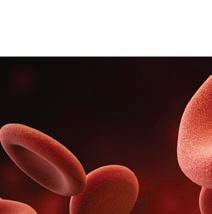

Other functions of the glycocalyx include the regulation of vascular permeability, fluid balance, and the synthesis of nitric oxide in response to the blood flow. The surface of the glycocalyx helps maintain endothelial function.
Meet the GlycoCheck!
For many years, the medical field has only analyzed a portion of the vascular system—the veins, arteries, and heart. However, those comprise only 1% of the surface area of all the vessels in your body, with the microvascular system making up the other 99%.
Until recently, those microvessels weren’t given much attention in the medical field. Due to their tiny size, they couldn’t be measured, couldn’t be operated on, and couldn’t be examined and assessed. There has been no instrumentation small enough to evaluate and mitigate any issue with the glycocalyx—until now!
The GlycoCheck is an FDA-registered, Class 1 medical device that allows the function of the microvascular system to be measured and analyzed, monitoring the status of the endothelial glycocalyx lining inside the microvessels. The device has been heavily researched around the globe, and there is no other device that tests to this level—it is a truly one-of-a-kind, life-changing system. Once only used in hospitals and universities, GlycoCheck is now available for practitioners!

GlycoCheck is a non-invasive test that produces a Microvascular Health Score that reveals the health of the microvessels by measuring several key parameters of the microvascular system:
• Capillary Density
• Capillary Blood Volume Recruitment Capacity
• Capillary Blood Volume Dynamic
• Perfused Boundary Region Flow Corrected
• Microvascular Health Score (MVHS): This is the overall score based on capillary density, recruitment capacity, and glycocalyx health. A higher score means better microvascular health.
Clearly, the health of the epithelial glycocalyx has an impact on all aspects of our overall health. It seems strange that we’ve only just recently developed a means to analyze and measure this—but finally, we can.
Knowing the importance of the glycocalyx and how it can be evaluated is a great first couple of steps. At Microvascular Solutions, we evaluate with a patented diagnostic device to determine an individual’s Microvascular Health Score. We provide a clinically proven solution to improve the health of your endothelial glycocalyx. You will be armed with the information you need to improve the health of your epithelial glycocalyx—and therefore, your overall health and well-being. We look forward to meeting you!
Lisa Sprague, MSS, PTA, LMT, is a licensed healthcare practitioner with over 35 years of experience. She has been in private practice since 1999 and specializes in frequency-based medicine and advanced wellness technologies. Lisa believes in treating the whole to heal the part, empowering you to optimize your health and well-being, and bringing self-care back into your healthcare.


Susan LoManto’s passion is her curiosity to learn about how the body works and what it needs to operate at the highest level. As a breast cancer survivor, Susan realized early on that nothing is more important than a healthy lifestyle. In her constant search for the root of well-being, she has finally found the missing link.
Microvascular Solutions is located at 5633 Strand Blvd., Ste. 312, in Naples. Contact Susan and Lisa at info@microvascularsolutions.com and visit microvascularsolutions.com for more information.

See ad on page 19 >


our
dissatisfaction,

Do you ever wonder what your life would be like if you felt truly free to say and act in accordance with your own wants and needs?
Have you thought about what it would be like to actually make decisions that were in your own best interest, even if that meant sometimes upsetting or disappointing someone else? Have you imagined what might change or how it would feel to be truly free and to have a solid sense of self? What if I told you that you could be free by simply becoming conscious of unconscious patterns and behaviors that you developed in your early years that no longer serve you. Freedom can be found by shifting codependent patterns!





Tian Dayton writes that codependency is “a trauma-related loss of self,” something that happens in our early development when our primary caregivers aren’t emotionally available to give us the love and nurturing we need. It is a learned behavior and relationship pattern. In a codependent relationship, one person sacrifices their needs (filling the “giver” role) while the other plays the “taker” role, depending on their partner, to meet their needs.
These relationships tend to be one-sided and can cause both partners to lose their sense of self. The patterns can show up in friendships,
marriages, and families. Often, the codependent will take on the “victim” role, but the truth is that it is a co-creation, and once we change our behavior, everything changes.
When we people-please, we often think we’re just being a “nice” person. But for a codependent, “niceness” has another dimension to it. The difference between just being “nice” and codependency lies within your motivation for this kindness. In one scenario, you have a ticket to a show that your friend wants to go to. You don’t really feel super attached to going and decide to give them the ticket because they’ve been having a hard time. You don’t really care whether you go, and you know they will be thrilled.
In the codependent scenario, on the other hand, you really want to go to the show, but you feel you should give it to your friend since they have been having a hard time. You give it to them with a desire to be more liked and feel “safer” in the friendship. You exchange going to the event for the hope of being more loved and appreciated. And if you’re being honest, you also subconsciously expect that this behavior will garner some sort of perk. In the future, if your friend doesn’t reciprocate or appreciate you enough, this will generally turn into resentment.
“The only indication that something may be off is
constant
frustration, fatigue, resentment, shame, and anger in relationships. Once we see these patterns, we have a chance to create balanced, loving, safe relationships— the very thing we long for.”
—Kristina B. Gretouce
Now apply that to other relationships. It’s the exact same pattern. The hardest part is that when we attempt to change these patterns or set boundaries, we will often feel selfish or fearful. In addition, we may not even know what we actually want and who we truly are outside of our relationships. That is why I am forever grateful to the people I have worked with through the years who have helped me to recognize these patterns within myself, reframe situations and remind me that it is acceptable and important to focus on my needs and wants.
These patterns are so ingrained that we are often unable to recognize them within ourselves. They have become so normalized that they become invisible. The only indication that something may be off is our constant dissatisfaction, frustration, fatigue, resentment, shame, and anger in relationships.


Break Free
Once we see these patterns, we have a chance to create balanced, loving, safe relationships—the very thing we long for. When I met my husband, I was clearer about who I was and what I wanted, and I was unwilling to be anything else. My family remarked that it was the first time they saw me behaving the same way when I was in my partner’s presence as when I was alone. I actually felt safe and free to be fully myself.
Can you relate? Do you carry different personas and feel like you don’t really know who you are? If so, maybe it’s time to break free.
I have found that recovery starts in connecting with ourselves in those moments when we are tempted to try and change others or garner love from them. In those moments, we can instead ask what need we are trying to meet within ourselves! And then start moving in that direction. Then watch your whole life transform!
Kristina B. Gretouce is a Certified Life and Health and Wellness Coach with over 15 years of experience.












Kristina offers a complimentary 10-minute discovery call—please contact her at 239.350.4544 and visit www.codependencyfreedom.com. 704 GoodletteFrank Rd N, Naples.

See ad on page 39>



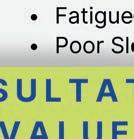













 By Dr. Kelly Miller, NMD
By Dr. Kelly Miller, NMD






Are mental health and psychological problems on the rise? Having been in practice for 44 years and evaluating and treating over 15,000 patients, I would have to respond with an overwhelming “yes.” In today’s world, 11% (3:1 boys over girls) are diagnosed with ADHD, 2.5% with autism spectrum (4:1 boys over girls), and 10–15% (more boys than girls) with dyslexia. Yes, 1 in 4 children today have some neurodevelopmental challenges. There is much speculation about why these numbers are increasing, but I’ll save that for another day. The main takeaway here is that these conditions can be improved and often resolved in several months with appropriate treatment.



There are three common denominators with all these diagnoses—ADHD, OCD, ODD, tics, Tourette’s, autism, dyslexia, anxiety, depression, and insomnia.

Primitive reflexes develop in utero and are designed to help facilitate the birthing process and movement in early life. There are 10 main primitive reflexes that typically go away by 12 months. When they do not, it signals that there was a lack of proper neurodevelopmental maturation in the brain stem.


The brain stem is to the brain as the foundation is to a house. All neurological systems develop in a stacking system on top of the brain stem. The cerebellum, the balance/vestibular system, and the oculomotor/eye tracking systems are much like the floor and walls of the house. On top is the pre-frontal cortex and cortex in the brain as the roof is on the house. When the foundation of the house is cracked and shifts, the floor slopes, and the walls crack. When the brain stem is immature, there are often problems with the balance/vestibular system, oculomotor/eye tracking system, and other sensory systems. Level floors and walls are necessary to create a level ceiling and roof. When sensory systems are not functioning properly, misinformation is fed into the pre-frontal cortex. This is the area of the brain where our decision-making comes from.



Retained primitive reflexes from an immature brain stem are associated with chronic negative neurobehavior and will not self-correct as we age without specific sensory-motor input. The brain stem is also where the vagus nerve originates. The vagus nerve is connected to all the organs in the body and controls 75% of the parasympathetic nervous system, or the “rest and digest” part of our nervous system. It is the calming, down-regulating part of our nervous system. Therefore, individuals with primitive reflexes are sympathetic, or “fight/ flight” dominant. Do we start to understand why anxiousness is so common?

“Retained primitive reflexes from an immature brain stem are associated with chronic negative neurobehavior and will not selfcorrect as we age without specific sensory-motor input.”
—Dr. Kelly Miller, NMD


When there are primitive reflexes and an immature brain stem, there will be an asymmetrical hemispheric brain development, with one side growing stronger than the other. This creates a functional disconnection syndrome. The left and right hemispheres should have a yin/yang relationship, one balancing the other. However, if one side is too strong it stops listening to the weaker side. Therefore, all mental health and psychological diagnosis are associated with a hemispheric imbalance in the brain.

The pre-frontal cortex evaluates the sensory information it receives and helps formulate motor plans in response. These include working memory and executive decisions for focus and attention, considering the future and making predictions, organizing thoughts and problem-solving, forming strategies and planning, inhibiting inappropriate behavior and initiating appropriate behavior, simultaneously analyzing multiple streams of information when faced with complex and challenging decisions, foreseeing and weighing potential consequences of behavior, shifting/adjusting behavior when situations change, modulation of intense emotions, impulse control and delaying gratification, and the ability to balance short-term rewards with long-term goals.
Medications do not address these issues well, as they are caused by networking problems and not a simple chemical imbalance. Often, one side of the brain has a six-lane highway while the opposite has a structure like an old farm road. These weaker networks can be built up with sensory input combined with specific tasks that involve the weaker networks. This is how neuroplastic changes are achieved in the brain. The best results occur when bottom-up therapies are combined with lateralization therapies and top-down therapies. This is what we do at Saving Your Brain.
Dr. Kelly Miller, NMD, and Saving Your Brain work with people of all ages to correct brain imbalances. These brain training centers use advanced technology to help resolve chronic brain health problems that aren’t resolved by one single approach. For more information, see savingyourbrain.com or call 239.986.3097.
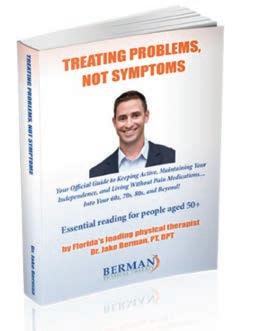

1032 Goodlette-Frank Road, Naples, Florida 34102

Despite unprecedented and ever-increasing access to economic and investment data, study after study has shown that the track record of private investors is not encouraging. Moreover, they typically do not realize they underperform the market. In fact, over the 20-year period ending in 2018, the average equity fund investor achieved a 3.88% annualized return, whereas the average S&P 500 Index returned 5.62%. Fixedincome investors fared even worse, realizing an average return of 0.22% compared to 4.55%by Barclays Aggregate Bond Index.

As the chart on the right shows, a $100,000 equity investment made 20 years ago and managed by an average equity investor would have been worth nearly $85,000 less at the end of last year than an S&P 500 index-tracking fund. That same investment, managed by an average fixed-income investor, would have been worth little less than half of what an investment in a Barclays Aggregate Bond Index-tracking fund would have been after 20 years.

The overriding reasons behind investors’ underperformance are behavioral biases that cause them to act on emotion and deep-seated misperceptions about investment risk.
Behavioral biases relate to how we process information to reach decisions and our preferences. They can affect all types of decision-making but have particular implications about money and investing.
These biases tend to sit deep within our psyche and may serve us well in certain circumstances. However, investing often leads us to move into market tops and bail out at market lows. These biases, combined with common misunderstandings about investment risk, can be thought of as five categories of destructive investment tendencies that private investors face, as shown in the graphic on the right.
At Wintrust Wealth Management, we see evidence of these tendencies in our clients’ thinking all the time. A desire to remove asset classes perceived to be risky or unfamiliar (real

estate, international equities, etc.) from their portfolios that, in fact, actually increases volatility. A preference for a particular asset class or investment vehicle based on the most recent year’s performance. A request to wait on putting cash to work until the (presumed) impending market correction comes. They are deep-seated in many and adversely affect the ability to realize long-term financial goals.
To reduce the influence of these destructive tendencies, investors must first understand what they are and how they influence their thinking.
Psychological studies have shown that we all tend to have unwarranted confidence in our decision-making. This trait appears universal, affecting most aspects of our lives. Researchers have asked people to rate their own abilities, for example, in driving, relative to others and found that most people rate themselves in the top third of the population. Few people rate their abilities as below average, although by definition, 50% of all drivers are below average. Many studies—of company CEOs, doctors, lawyers, students, and doctors’ patients—have also found that these individuals tend to overrate the accuracy of their views of the future.
Overconfidence is linked to the issue of control, with overconfident investors believing they exercise more control over their investments than they do. In one study, affluent investors reported that their stock-picking skills were critical to portfolio performance. In reality, they were unduly optimistic about the performance of the shares they chose and underestimated the effect of the overall market on their portfolio’s performance. In this simple way, investors overestimate their abilities and overlook broader factors influencing their investments.
Overconfidence has direct implications for investing, which can be complex and involve forecasts of the future. This is evident when investors overestimate their ability to identify winning investments. Traditional financial theory suggests holding diversified portfolios so that risk is not concentrated in any particular area. A misguided conviction can weigh against this advice, with investors or their advisers “sure” of the promising prospects of a given investment, causing them to believe that diversification is, therefore, unnecessary.
Overconfidence also tends to produce stubborn investing. This can be seen in “conservatism bias,” which describes the idea of the decision maker clinging to an initial judgment despite new, contradictory information.
A third way overconfidence adversely affects investing decisions is the tendency to trade too frequently, often with a negative effect on returns.
A study of U.S. investors with retail brokerage accounts found that more active traders earned the lowest returns. The table to the right shows the results for the most and least active traders. For the average investor switching from one stock to another, the stock bought underperformed the stock sold by approximately 3.0% over the following year. Whatever insight the traders think they have, they appear to overestimate its value in investment decisions.
Underlying this overconfidence is a number of attitudes investors tend to hold that they should be mindful of. Foremost is a characteristic known as ‘self-attribution bias.’ In essence, this means that individuals faced with a positive outcome following a decision will view that outcome as a reflection of their ability and skill. However, when faced with a negative outcome, this is attributed to bad luck or misfortune. This bias gets in the way of the feedback process as decision-makers block out negative feedback and miss the opportunity to improve future decisions. Similarly, hindsight bias fuels overconfidence. The statement “I knew the whole time this would happen” shows that we have an explanation for everything after the fact. This hindsight bias keeps us from learning from our mistakes. Even if prices rise, we keep buying. “What the heck, I’ll buy it again because it’s cheaper than last time,” we say. In other words, the typical private investor buys high and sells low—wasting a lot of money in the long term. Additionally, confirmation bias, which is the phenomenon of supporting our own opinions with selective information, fuels overconfidence. Investors seek confirmation for their assumptions. They avoid critical opinions and reports, reading only those articles that put their decision in a positive light. This is also common in the media. Business journalists will report on innovative, creative companies that are all making a profit in bull markets. However, they rarely point out that not all companies using those same criteria succeed, as it would undermine the reporting narrative. We cannot avoid reading the headlines about price gains and booming markets or the multitude of success stories, and, unfortunately, these stories attract the interest of many amateur investors.
Inertia is the failure to act. A related issue is a tendency for emotions to sway investors from a course of action they have committed to (i.e., having second thoughts). The desire to avoid regret is one driver of these behaviors. Inertia can act as a barrier to effective financial planning, stopping investors from saving and making necessary changes to their portfolios. A fundamental uncertainty or confusion about how to proceed lies at
“The implication that investor under-performance has for longterm wealth accumulation is staggering.”
—Nina Azwoir
the heart of inertia. For example, if an investor is considering changing their portfolio but lacks certainty about the merits of taking action, they may choose the most convenient path—wait and see. In this pattern of behavior, so common in many aspects of our daily lives, the tendency to procrastinate dominates financial decisions.
Another driver of inertia is the so-called “disposition effect” associated with our natural aversion to loss. Behavioral finance suggests investors are more sensitive to loss than to risk and return. Some estimates suggest that people weigh losses more than twice as heavily as potential gains. For example, most people require an even (50/50) chance of an increase of $5,000 in a gamble to offset an even chance of a loss of $2,000 before they find it attractive. The idea of loss aversion also includes the finding that people try to avoid locking in a loss. Consider an investment bought for $10,000, which rises quickly to $15,000. Investors are often tempted to sell to lock in the profit.
In contrast, if the investment drops to $5,000, investors tend to hold it to avoid locking in the loss. The idea of a loss is so painful that investors tend to delay recognizing it. More generally, investors with losing positions show a strong desire to get back to break even. This means investors show highly risk-averse behavior when facing a profit (selling and locking in the sure gain) and more risk-tolerant or risk-seeking behavior when facing a loss (continuing to hold the investment and hoping its price rises again).
Research done to test this idea using data from a U.S. retail brokerage found that investors were roughly 50% more likely to sell a winning position than a losing position, even though tax regulations make it beneficial to defer locking in gains for as long as possible while crystallizing tax losses as early as possible. It also found that the tendency to sell winners and hold losers significantly harmed investment returns.
Behavioral finance research suggests that investors sometimes struggle to apply the concept of portfolio diversification in practice. Evidence suggests that investors use “naïve” rules of thumb for portfolio construction in the absence of better information. One such rule has been dubbed the 1/n approach, where investors allocate equally to the range of available asset classes or funds (“n” stands for the number of options available). This approach ignores the specific risk-return characteristics of the investments and the relationships between them.
Another common example of naïve diversification is the tendency for some investors to hold
extreme portfolio allocations. On the one hand are aggressive investors who only hold all-equity portfolios. On the other hand are ultra-conservative investors who are reluctant to hold anything other than bonds. Many such investors need the help of an investment professional to ensure a balance of risk and return in portfolios.
Naïve diversification also occurs when investors apply their well-documented preference to invest in familiar assets, which they often mistakenly associate familiarity with low risk. This “home bias” manifests itself in high portfolio weights in assets from an investor’s own country. They are more familiar with and confident about local investment opportunities, so even though it is much easier than in the past to diversify investments across geographies, investors tend to go with what they know and can easily understand. In so doing, they miss out on important diversification opportunities that can not only lower risk but improve returns. For more on home bias and how to avoid it, see our paper, An International Investing Primer, from April 2015.
Home bias also is apparent in the tendency of investors to buy shares in the companies they work for. In doing so, investors may become over-allocated to their company’s stock and the unsystematic risks that come from being under-diversified. Individuals over-allocated to company stock risk having their assets and their income significantly reduced should the company go through a period of financial difficulty.
See our Summer 2023 issue for the second part of this article.
Nina Azwoir, First Vice President of Investments, Wintrust Wealth Management. © Morningstar 2020. All Rights Reserved. Used with permission. This information may answer some questions but is not intended to be a comprehensive analysis of the topic. In addition, such information should not be relied upon as the only source of information, competent tax and legal advice should always be obtained.
Securities, insurance products, financial planning, and investment management services offered through Wintrust Investments, LLC (Member FINRA/ SIPC), founded in 1931. Trust and asset management services offered by The Chicago Trust Company, N.A. and Great Lakes Advisors, LLC, respectively. Investment products such as stocks, bonds, and mutual funds are: NOT FDIC INSURED | NOT BANK GUARANTEED | MAY LOSE VALUE | NOT A DEPOSIT | NOT INSURED BY ANY FEDERAL GOVERNMENT AGENCY. See ad on Inside Front Cover >

“The worst enemy of the investor is most likely himself.”
—Benjamin Graham

Do you feel comfortable in your home? Do you avoid coming home after a stressful day? Is the vibe and energy in your home making you feel depressed? Are you tired of feeling this way? If so, it’s time to make some changes.





6 Ways to Refresh and Recharge










1. Be mindful. Think about the money you’ve wasted on impulse purchases. Do you have items sitting in closets in boxes that haven’t been opened in years? Do you have clothes hanging in your closet with tags still on them? Next time you go to purchase something, ask yourself if you really need it.
2. Save money. How many times have you purchased a duplicate item of something you already own? If you’re disorganized, you probably don’t feel like scouring the house for a misplaced item, so you usually just purchase another. How much money could have been saved if you didn’t waste it on purchasing duplicate items? Create systems in your home by itemizing and categorizing everything so that when you need it, you’ll easily be able to find it.


3. Get it out of the house. You’re holding on to items you’ve wanted to donate. You have items that don’t belong to you that you need to return. These items are cluttering up your home, and with that comes stagnant energy. If you’re holding things that belong to other people, go through the piles, make a list of all the people you have to return items to, and send them back immediately. Put the bags of donations in the car, get them out of the house, and plan to drop them off at a donation center. Take items you have to sell and make an
appointment right away with a consignment store. Are you holding onto items with the hopes that you can pass them on to other family members? Does that person you’re giving it to really want them? They might not want it but feel bad and take it, and now it ends up in their home. It becomes a vicious cycle.




4. Keep what’s important to you. When you have too much stuff, the sentimental items get entangled with the items that don’t mean anything to you. As you declutter, decide what will be useful, what is sentimental, and what is never going to be used. You want to be able to appreciate the sentimental items—don’t let them become part of the clutter.
5. Tell people how you feel. If somebody wants to pass an item down to you and you really don’t want it, be honest with them. If you don’t like it, don’t take it. How many of you have taken an item somebody has given you and it ended up in the back of a closet?












































6. Organize. Once you declutter and get rid of items you no longer need, it’s time to organize. Remember to break this process down. Don’t look at the project as a whole or you will get overwhelmed, stressed, or frustrated, and nothing will get done. When you are organized, it’s easy to see what you have in your home. When you need something, you will find it immediately. You will be able to appreciate and respect your belongings.


Tackle one room a week or one a month. Watch how your energy will shift when you refresh your home and practice some of the above tips. People I’ve worked with describe this process as cleansing, cathartic, and freeing. Take note of how you feel once you’ve completed this project.


Kristin MacRae is an Award-Winning Organizing and Efficiency Consultant and Speaker. She helps her clients get organized, saving them time and money, decreasing their stress levels, and helping them become more efficient and productive. She is a full-time resident of Bonita Springs. For more information, visit her website www.kristinmacrae.com.

“As you declutter, decide what will be useful, what is sentimental, and what is never going to be used. You want to be able to appreciate the sentimental items—don’t let them become part of the clutter.”
—Kristin MacRae
Thistime of year is known for spring cleaning and clearing out those spaces in our home that haven’t seen the light all winter. Decluttering your living spaces gives a boost to your mental and physical well-being by creating a clean, calm atmosphere and recognizing the rut you may have gotten into.
But do you ever spring clean your pantry? Can you say what ingredients and products have become staples in the cabinets? It’s okay if you’ve gotten a bit lax—use these tips to give your pantry shelves a good detox this spring!

Although whole foods are always preferred when preparing meals, having some boxed, canned, or lightly processed goods can be very convenient. The key here is focusing on fewer ingredients— read the ingredient label to look for hidden sugar, preservatives, or food dyes. Choose organic to avoid most pesticides and GMOs, but remember that organic doesn’t mean an item can’t still be
filled with processed sugar, white flour, and empty carbs. Even items like dried fruit, cereal, breads, salad dressings, chocolate, and canned soups can contain preservatives, sugar, and unhealthy fats like palm oil, which is highly inflammatory to the body.
Snack foods such as crackers, protein bars, chips, and so on are some of the most-consumed types of processed foods. Switching out items for healthier alternatives can make a huge difference in cleaning up your pantry (and your diet!). Hu Grain Free Crackers, Ella’s Flats, and Simple Mills are great options for replacing the highly processed crackers in your cupboard. Apple or kale chips are a good swap for regular chips and still provide that coveted crunch. Protein bars can be a bit tricky, but looking for those with fewer ingredients (Rx Bars are amazing), no more than 8 grams sugar, at least 3 grams fiber, and no palm oil is best.
“Detoxing your pantry isn’t all about food but what might be contaminating the food as it sits... Singleuse containers are the biggest source of BPA and should never be reused. Glass containers are a much safer option to avoid chemicals contaminating your food.”
—Betsy Opyt, RD, LD/N, CDE, RYT
Detoxing your pantry isn’t all about food but what might be contaminating the food as it sits. For instance, many plastic storage containers and canned foods contain BPA, which leaches into food products and increases if the product is heated or scratched. Single-use containers are the biggest source of BPA and should never be reused. Glass containers are a much safer option to avoid chemicals contaminating your food, as well as fresh or frozen organic vegetables or those canned in BPA-free cans.

You may not have realized that your cookware can be a significant source of toxins depending on its coating and cooking limitations. For instance, Teflon has made some changes to make its coating safer for consumers, but only if not scratched or heated above 500 degrees (and they do still contain some chemicals under investigation for health effects). Ceramic, steel, and cast iron are the best choices on the market and the safest options for avoiding toxins while cooking.
So, while you’re spring cleaning this year and clearing out the cobwebs of those dark, forgotten places, add the pantry to your list—and remember it’s a vital part of your home that impacts your daily life in the kitchen.

If you’re feeling overwhelmed by the task, you may prefer to have a professional do it for you. Have a registered dietitian do a pantry clean-out service where everything is hand selected based on your diet and health preferences. I even have all the new food arrive at your location and put it away myself!


Betsy is a Licensed and Registered Dietitian, a Certified Diabetes Educator, Integrative & Functional Medicine Nutrition Therapist, and RYT200 yoga teacher. She specializes in nutrigenomics, gut health, food sensitivities, detoxing, inflammatory diseases, and longevity living. She also understands the importance of living a mindful life and incorporates her mindfulness and yoga teaching background into her practice. Betsy is a professional speaker and advocate for healthy living and is available for individual consultations, group programs, and speaking engagements.


Betsy’s exclusive balcony yoga studio, called 4 Elements Yoga Naples, provides a luxury outdoor experience connecting you to the beautiful environment of Naples. To learn more, visit www.healthyconceptsconsulting.com and www.yoga4elements.com, or Contact Betsy at 239.297.8844 or betsy@healthyconceptsconsulting.com.
See ad on page 47 >




When you think of Napa Valley, what comes to mind? Images of picturesque rolling hills with miles of vineyards, world-class restaurants with incomparable food and wine, pampering at exquisite spas, luxurious resorts, and quaint bed and breakfasts, right? Well, I bet your first thought isn’t that you would find eco-friendly lodging there. Think again…



In May of 2007, Jim Gunther and Jamie Cherry of San Francisco, CA, took the reins as the new innkeepers of The Inn on First, a contemporary bed and breakfast located in the heart of Napa.
Jim and Jamie brought a fresh look and fervor to excel in service to their guests. What distinguishes their deluxe bed and breakfast from any other in Napa Valley is not only the touch of San Francisco style they have added to the decor and their focus on hospitality as a personalized gift to their guests, but their commitment to contribute to an improved way of living and environmental consciousness.
Owners Jim Gunther and Jamie Cherry have truly outdone themselves with this bed and breakfast. If you’re looking for a romantic getaway, this is the place. Jim makes all the breakfasts from scratch with deliciously unique food and over 130 selections in his repertoire. In fact, he even keeps track of what you had when you stayed there before, so you never have the same breakfast twice!
From the moment you step through the doors of The Inn on First, you’re greeted with a feeling of coming home. Jim and Jamie help orchestrate your memorable stay in the wine country, and it’s their combined talents that shape your experience. Situated on a quiet street in downtown Napa, this American craftsman-style B&B offers luxury, pampering, and peaceful surroundings, and you can feel good that you’re staying at a property that is environmentally conscious.
We stayed in the Noble Vineyard suite with gold- and red-toned décor, which has a luxuriously comfortable king bed, private entrance, gas fireplace, large seating area, whirlpool tub, twin sinks, and spacious rainfall shower. The best part? There is NO TV! You have your own private balcony that is hidden under the branches of a large oak tree


with a small cafe table and two chairs. Other cool things for your use while staying at the Inn are the stainless-steel water bottles and a picnic basket equipped with everything you need.
In 2014, they were one of thirteen businesses in the State of California to receive a Climate Leader Award from CoolCalifornia.org, which is funded by the California Environmental Protection Agency. This award recognizes California small businesses that demonstrate exceptional climate change management practices and communication. Other green practices they’ve implemented include:
• Low-flow water sources and tankless water heater.
• Kitchen waste and garden composting.
• Re-usable glassware instead of paper or plastic; stainless steel water bottles replacing plastic water bottles.
• In-room recycle bins.
• In-room climate control. Each room has a personal air-conditioning/cooling unit, heat source, and ceiling fans with occupancy sensors which allow for energy savings in unoccupied rooms
• Luxury Toiletries from Gilchrist & Soames. The BeeKind® Collection features formulations that contain no parabens, phthalates, petrolderived ingredients, mineral oil, urea, DEA, TEA, or propylene glycol. They use recyclable packaging and are free of any artificial colors or dyes.
• Household natural cleaning products that protect both the environment and the housekeepers who use them.
• Certified-green linen service.
• House-made snacks, which reduces unnecessary packaging/shipping and cuts back on the pollution derived from automobile-based distribution and paper waste.
• Food storage bags that are composed of clear 100% home-compostable cellulose product made from wood fiber that causes nearly zero environmental impact.
• Natural cleaning and gardening products are used to keep rooms and grounds in pristine condition

Interestingly enough, we met a couple at breakfast that was spending their honeymoon at the Inn on First—I couldn’t imagine a more perfect place!
“In 2014, the Inn on First was one of thirteen businesses in the State of California to receive a Climate Leader Award from CoolCalifornia.org, which is funded by the California Environmental Protection Agency. This award recognizes California small businesses that demonstrate exceptional climate change management practices and communication.”
California
–Dr. Diane Hayden, PhDNapa Valley in Northern
“The Valley now boasts the finest wines rather than apples, and the Case Ranch now sits on two acres on a quiet country road with many remaining fruit trees.
— Dr. DianeSonoma is a magical place dotted with quaint towns, each with its own unique flavor. I recommend Healdsburg as a home base for a couple of days and then spend a day further south in Sonoma. Healdsburg has a lively downtown area, yet you can get away from it during the day by driving or cycling through wine country. If you’re a foodie, you’ll be excited to hear that a bumper crop of award-winning restaurants has popped up, further elevating Sonoma’s reputation as a culinary epicenter. Other things not to miss are mingling with locavores at the Healdsburg Farmer’s Market, held every Saturday from May through November from 9 am to 12 pm, one block west of the town square.
We stayed at Case Ranch Inn, located on the quiet side of Healdsburg. The Inn is a peaceful respite in a country location where you can relax and enjoy the renowned Russian River Valley wine country and all its many beautiful attractions. Case Ranch Inn is a Registered National Wildlife Federation Backyard Wildlife Habitat. The two-acre setting includes the main house with two guest rooms and a cottage, a wrap-around porch, and lush gardens with a gazebo, a pond, and a fountain.
Built around 1894 by Joseph Walker, the Case Ranch was purchased by James L. Case in 1910, when it consisted of a Victorian farmhouse on 50 acres in the rolling hills of the Russian River Valley.
Case Ranch Inn is now owned by Barbara Wolf. Barbara became interested in bed and breakfasts after traveling extensively with her daughters in Europe, staying at a wide variety of charming bed and breakfast lodgings from the British Isles to Spain, Portugal, Germany, Austria, and Italy.


Case Ranch Inn received the Bay Area Green Business certificate for conserving resources and protecting the environment. You can enjoy antique shopping in Sebastopol and Healdsburg, hiking in beautiful Armstrong Woods State Park in Guerneville, tasting award-winning wines at hundreds of Sonoma County’s nearby wineries, and visit the magnificent California coastline where the Russian River meets the Pacific Ocean. If you’re in the Sonoma Wine Country to relax and unwind, there’s always ambitious porch sitting or deck napping! Your stay includes a FREE Wine Tasting Passport for tastings at premium Russian River Valley wineries.
Now let’s get to the food! My favorites in downtown Healdsburg are Barndiva and Chalkboard. With a tagline like “Eat the View,” you know Barndiva is going to be fresh, local, and seasonal! Innovative cuisine and delicious cocktails are served in an impossibly hip setting: a renovated barn with a sleek but unstuffy design, which consistently draws a big crowd. We had the king salmon and potato croquette with heirloom beet salad, shaved radish, Belgian endive, and kumquat, and the banh mi house ground pork loin with shaved cucumber, cilantro, pickled chili salad, aioli, toasted brioche. Both were amazing, but keep in mind that the selections are very seasonal, so these options may not always be on the menu.
Located just off the square in downtown Healdsburg, Chalkboard is casual and contemporary. Executive Chef Shane McAnelly’s menu of small plates is inspired by produce from a dedicated three-acre garden, paired with local wine flights and inventive cocktails. Chalkboard’s daily-changing menu is defined by ingredients sourced from local purveyors and farms, highlighting crudos, just-picked salads, handmade pasta, roasted and grilled meats, seafood, and a selection of playful dessert offerings. They also do a rotating happy hour based on different cities. We sat at the lively bar and had the short rib sliders with marmalade, blue cheese, and bacon aioli and the roasted butternut squash with brown butter, sage, kale, and garlic. Delicious!
One of California’s premier wine regions, Sonoma County, is a hidden gem. It’s a short drive but worlds away from the sometimes pretentious and
Top: Case Ranch Inn in Healdsburg. Bottom: The Garden Cottage at Case Ranch Inn.Hayden, PhD
always pricier Napa tasting rooms. You’ll rarely have to wait in line or make a reservation for a tasting, and most tasting fees range from $5–$15. This area is known for amazing zinfandel, pinot noir, and chardonnay. Here’s my not-to-be-missed list:
• Chalk Hill Vineyard: Chalk Hill produces one of my all-time favorite chardonnays, and I love their commitment to sustainable farming, which ensures that the land will remain healthy for generations and wines will accurately reflect their origins in the hills of eastern Sonoma County.
• Ridge Vineyard: Surrounded by beautiful 115-year-old vines, this eco-sustainable winery stands as one of the most unique sites in all of Sonoma County’s wine country. The facility is built of straw bales and vineyard clay, and primarily solar-powered, and produces exceptional single-vineyard wines.
• Preston Vineyard and Winery: This is an experience unlike your typical wine tasting. In addition to estate-grown, organic wines, you’ll find many farm-fresh products like organic vegetables, fruits, and nuts, you-pick strawberries, estate-laid eggs, sauerkraut, salami, and a selection of local, artisanal cheeses grown and produced in small batches by the Preston family. Sample Lou’s bread, estategrown and pressed olive oil, and cured olives in the tasting room. Enjoy this fresh food and wine in the picnic area, and when you’re done, take a stroll through the organic gardens.
• Hartford Family Winery: This pinot noir is amazing. Small and low-yielding vineyards deliver meager amounts of expressive and personality-rich wine. The single-vineyard Hartford Court pinot noirs and chardonnays total as few as 93 cases up to about 800 cases. Be sure to get your hands on some.
• Dutton-Goldfield Winery: A laid-back, cool vibe atmosphere in the tasting room with amazing chardonnays and a Pinot Blanc. Pinot Blanc is a white-skinned mutation of pinot noir, prized for its fresh stone fruit flavors and cleansing mouthfeel.


If you feel the need to work off all this amazing food and wine, you can saddle up for a two-wheeled excursion through the gorgeous countryside of Dry Creek Valley, where farms co-mingle with some of Sonoma’s top wineries. Pick up your bike at Healdsburg’s Wine Country Bikes, which supplies rentals, helmets, maps, and bike-mounted wine bottle carriers for your bounty. Newbies should consider a guided tour, but experienced riders can venture out on their own. An excellent, not-too-ambitious route is north along West Dry Creek Road, which has less traffic than Dry Creek Road.
Your first stop: Procuring a picnic lunch at the inimitable, circa 1880sDry Creek General Store.You’ll beat lunchtime crowds at this wooden-floored general store, whose gargantuan made-to-order sandwiches and artisan snacks never miss. Though it might be too early to start drinking (or not), check out the historic bar, full of decades-old memorabilia, where both draft beer and live bait are sold.
While wine drinking has become much less elitist in recent years, knowing a few industry terms always comes in handy. One that’s especially useful in tasting rooms: Ask to “revisit” a certain offering if you like it or are considering buying a bottle. Most tasting rooms will waive tasting fees with a purchase, and you should also consider sharing a tasting if you’re planning on hitting several wineries in one day.
For you beer aficionados, you’ll definitely want to check out Bear Republic and Russian River Brewing Company. There’s something for every person and for every palate in the breathtaking wine country of Northern California.
“One of California’s premier wine regions, Sonoma County, is a hidden gem. It’s a short drive but worlds away from the sometimes pretentious and always pricier Napa tasting rooms.”
Top: The Noble Vineyard Suite at the Inn on First. Bottom: Whirlpool tub, twin sinks, and spacious rainfall shower at the Inn on First.— Dr. Diane Hayden, PhD
 By Jordan Dunin
By Jordan Dunin
For centuries we have been taught the importance of physical health, while mental health has largely been dismissed and neglected. Finances can play a huge part in this, as people are often forced to choose between tending to a broken bone or a shattered spirit.
Even more than that, there is little understanding of the critical role mental health plays in one’s overall well-being. The irony of it all is that overlooking mental health can directly impact physical health.
Health coaching is a perfect illustration of how our well-being is directly tied to both physical and mental health. Considering health coaching is more of a partnership, their approach is vastly different from that of a traditional doctor. A health coach guides you on your healthcare journey and provides the tools you need to care for yourself, whereas a doctor treats current symptoms.
When we feel pain, it’s our bodies communicating with us. The problem is, identifying that distress and the root cause is not a linear process. This is why so many people with chronic pain— whether physical, mental, or both—find themselves meeting with endless doctors, consultation
after consultation. Some answers are simply just… not simple. Health coaches work with you to uncover the real hindrances in your life. They’re not looking for a cookie-cutter answer, they’re looking for your answer.
Thanks to today’s technology, we have access to an abundance of information, research, and insights from the world’s most influential healthcare professionals. We connected with some of them to discuss their relationship with the healthcare system. Here we have some incredible wellness advice they’ve shared with us, for both those looking for guidance and those looking to guide others.
With the go-go-go culture of the modern world, individuals are burning out before they even recognize a problem. It’s easy to blame frantic behavior on stressors like career, family, and finances, but it’s not as easy to slow down. While the pressures that lead to burnout can feel out of our hands, putting your health and wellness first doesn’t have to be.
Naples-based chiropractor, Dr. Nateja Tomsin of The Collective Chiropractic, says, “The state of our nervous system is so incredibly important to how
our body is functioning overall. When people are stuck in a state of sympathetic overdrive, meaning our nervous system is constantly in protection mode, our body and nervous system is focused on one thing—survival.”
Who better to speak on the relationship between mind and body? Clients may come to her with specific pain points, but she doesn’t only focus on their current health. Tomsin continues, “In our office, we focus on restoring the balance and function of the nervous system back into a parasympathetic state, so our bodies’ own innate healing can take place. We cannot heal and thrive when our body is signaling danger.”
While health coaches have an array of niches, the nutrients we give our body will always be extremely relevant to all aspects of our health.
“If you can heal your digestive system, you can heal your entire body.” HatchPath nutritionists speak on the power of eating right and explain how the digestive system is the foundation of good health. Listening to your body and tuning into your needs is step one of healthy living, but nutritionists make a strong point. “There are as many nutrition plans in this world as there are people,” shares a HatchPath nutritionist.
One huge misconception when it comes to health and wellness is that there’s one checklist to follow. Having a healthy lifestyle looks different for everyone, but actually wanting better for yourself is a prerequisite. A health coach is there to help, guide, and support you, but they can’t make you desire better health.
“Bad habits can be unlearned to make way for good habits to form. Having willpower is key to seeing great results! Trust yourself and the process.”
Wherever you are in life, chances are you’ve battled with bad habits. HatchPath health coaches have a positive mentality that relies on trust and patience. They aim to help individuals move out of their own way so that they can truly heal. The
powerful transformations they witness are what motivates them to continue helping others.


As unique as every HatchPath health coach is, there is one thing they all have in common: a passion for what they do. With the collaborative nature of health coaching, there has to be a certain level of authenticity. Coaches are in this field because they want to help others, but they excel because they understand others.
“The purpose of coaching is to help people recognize the tools they already have and unearth their own solutions. Essentially, we teach the man to fish. We don’t simply throw a one-sizefits-all approach at the man and leave him to his own devices. We don’t medicate; we guide and empower. Our own expertise simply illuminates the path already before people.”
This statement perfectly articulates the complexities of mental health and the impact a coach can have. The feeling of being misunderstood by a healthcare professional may leave you feeling worse than when you started. A lack of answers can stir frustration, and individuals are then left with nothing other than a large medical bill. As health coaches emphasize, looking within is the key to finding answers. You just need some guidance along the way, and ongoing support is essential in reaching your true self.
Taking care of your mental health is an endless journey, but it doesn’t have to be a burden. Each moment you dedicate to your health is a step in the right direction. Join the HatchPath community to thrive or help others thrive.

With a huge community of experts in both physical and emotional wellness, there is a HatchPath health coach that can help you unveil your purpose. Find them today at www.hatchpath.io.
If you think becoming a health coach is your calling, there’s no better time than now to kick off your practice. With the flexibility and customization of HatchPath’s platform, you can explore this new career at your own pace. Get started for free today at www.hatchpath.io.
Jordan Dunin is the CEO and Founder of HatchPath—an online marketplace connecting clients with health coaches. He knew that coaches were the missing link in the healthcare system, and he knew there had to be a better way to find them. Jordan created HatchPath out of his desire for holistic healthcare that works and to connect as many people as possible to the right people who can help them. Call 239.361.6704, email jordan@hatchpath.io, and visit hatchpath.io for more information, and find him on Instagram: jordandunin
See ad on Back Cover >
“The state of our nervous system is so incredibly important to how our body is functioning overall. When people are stuck in a state of sympathetic overdrive, meaning our nervous system is constantly in protection mode, our body and nervous system is focused on one thing—survival.”
—Dr. Nateja Tomsin














 By Denise A. Pancyrz
By Denise A. Pancyrz
According to the National Institute of Diabetes and Digestive and Kidney Diseases, diabetes is a disease that occurs when your blood glucose is too high. Chronic high glucose is tied to insulin resistance, which contributes to weight gain.
Approximately two-thirds of U.S. adults are considered overweight or obese. Its insulin resistance is linked to prediabetes, type 2 diabetes, cardiovascular disease, and other disorders referred to as metabolic syndrome, which is a cluster of disorders: obesity, hypertension (high blood pressure), dyslipidemia (high LDL cholesterol, low HDL cholesterol, high triglycerides), and hyperglycemia (high glucose).

Chronic low-grade inflammation can impede improvement or worsen these issues, including arthritis. Chronic inflammation can occur in response to toxins and/or an excess of fat cells, especially in the belly. Within arteries, it can contribute to the buildup of plaque, which can reduce blood flow, form clots, and can be the cause of heart attack and stroke.
As insulin resistance worsens, it becomes difficult to efficiently convert sugars, and glucose increases. High glucose damages blood vessels, affecting the kidneys, eyes, brain health (Alzheimer’s and dementia), heart, and liver.
Weight gain and obesity are a foundation for incurring health issues. Insulin and glucose balance is affected when the pancreas tries to provide additional insulin to lower glucose. Over time, too much insulin in your system contributes to weight gain, and too much sugar in the bloodstream contributes to chronic inflammation, which impedes healing.





Medication can help reduce glucose, cholesterol, and blood pressure. Lifestyle changes offer the biggest impact. But why is it that lifestyle changes don’t seem to help enough? Because we like a quick fix. It takes years to impair health. Therefore, it can take years to repair your health. Lifestyle changes are the steps you take to adjust the food and beverages you consume on your health journey. Your “cheat” days should come after you have made substantial changes. This is the time to think of being in a “healing” mode. It takes time to heal.
Exercise will help lower glucose levels; this is a great start. It also helps get oxygen throughout the body and gets your digestive tract moving. A sedentary life is just as bad as smoking. Combining a
“Exercise will help lower glucose levels; this is a great start…. A sedentary life is just as bad as smoking. Combining a healthy diet, exercise, and stress reduction techniques with good sleep can also help reduce anxiety and depression.”
—Denise A. Pancyrz
healthy diet, exercise, and stress reduction techniques with good sleep can also help reduce anxiety and depression. Improved emotions have a direct impact on wanting to make changes.
You can be tested for an inflammation marker through blood or hair analysis. An hs-CRP blood test can measure C-reactive protein. I can personally attest to lifestyle changes reducing inflammation. At my worst, my result was 19. Above 10 can indicate inflammation. I was able to reduce it to below 1.0, which is ideal.
A specific hair analysis test can offer inflammation specific to the digestive tract. Combine this test with food sensitivities, and we now have a real opportunity to learn what is causing issues specific to you and set the course for improvement.
Some improvements can be seen quickly, such as a reduction in glucose levels. That’s just the start of your health journey to reducing inflammation. In addition to improving glucose, I hear from clients who have seen improvement in arthritis and gut issues. That’s because your overall metabolism benefits from coordinated lifestyle changes.

For anyone that believes lifestyle changes are secondary, please reconsider. Diabetic medications cannot cure diabetes. Diets are temporary ways of reducing glucose. It’s a serious look at your lifestyle that can offer long-term success.

Keep in mind that while we have been taught that type 2 diabetes is referred to as a disease, it’s actually a symptom of something larger.

Reversal and Holistic Lifestyle Coach, speaker, and best-selling author of The Virgin Diabetic, Reverse the Effects of Type 2 Diabetes, Reduce Medication, and Improve Your Glucose Levels, available on Amazon. Diagnosed with type 2 diabetes, Denise was prescribed four daily insulin shots along with oral medication for diabetes and heart disease. This protocol helped to bring her glucose levels down; however, she did not feel as healthy and vibrant as expected. After changing her protocol by learning to rest and preserve her pancreas, she was able to eliminate all medication and insulin, regaining her energy. Visit www.ReverseMyDiabetes.net for coaching and training information, to book a free consultation, or to set up a speaking event. Contact Denise by calling 888.848.1763 or email her at Denise@ReverseMyDiabetes.net. See ad on page 13 >

 By Jennifer Vear Hoy, MS, MS
By Jennifer Vear Hoy, MS, MS
Intoday’s very uncertain times, many of us feel as though we are out of sync with ourselves and others. What causes this type of emotion within us?




Uncertainty and indecision are very difficult on us, even during the best of times. It is the not knowing that causes so many people such distress. Often, it’s as though we wake up one morning and suddenly, we feel depressed. If we pay attention to ourselves, we can usually tell when we are beginning to go down that slippery slope.
Depression is often misunderstood. We want to attribute it to something finite, but unfortunately, that is not usually the case. It’s not only hard to endure, but it is also a risk for heart disease and dementia.
Anyone can get depressed, and it can happen at any age and in any type of person. If you have one episode of depression, you are at risk of having more episodes throughout your life. About 1 out of every 6 adults will have depression at some time in their life, and it affects over 17 million American adults every year.

According to Johns Hopkins, depression:

• Is a serious mood disorder that affects your entire body, including your mood and thoughts.











• Touches every part of your life.
• Is not a weakness or character flaw.
• Is a chemical imbalance in your brain that needs to be treated.




• Is situational vs. chemical.
Key points about depression:
• Some types of depression can run in families.
• Depression causes ongoing, extreme feelings of sadness, helplessness, hopelessness, and irritability.
• These feelings are a noticeable change from what is “normal” for you and last more than two weeks.
• It can be diagnosed after a careful psychological and medical history conducted by a mental health professional.

• It is most often treated with therapy, medication, or a combination of both.
Depressive symptoms can occur in adults for many reasons and have many causes, including hormones, medication, brain chemistry, or even inherited traits. But whatever the cause, it is important to understand what you are feeling.
Types and Symptoms of Depression

There are many types of depression. It is important to understand the type you or a loved one is experiencing so you can get the help that is needed.
Some types of depression are:






• Bipolar Disorder
• Major Depressive Disorder (Clinical Depression)
• Dysthymia (Persistent Depressive Disorder)
• Postpartum Depression (PPD)



• Psychotic Depression
• Seasonal Affective Disorder (SAD)
• Disruptive Mood Dysregulation Disorder (DMDD)







• Premenstrual Dysphoric Disorder (PMDD)
• Atypical Depression
• Situational Depression (Reactive Depressive/ Adjustment Disorder)
• Substance/Medication-Induced Depressive Disorder
• Depressive Disorder due to other condition
• Unspecified Depressive Disorder
• Treatment-Resistance Depression
Psychological symptoms include:


















• Sadness, tearfulness, emptiness, or hopelessness
• Anger
• Thoughts of death, suicidal thoughts
• Anxious or negative feelings
• Low self-esteem
• Unfounded guilt
Physical symptoms include:
• Fatigue and lack of energy
• Significant appetite changes


• Sleep abnormalities
• Concentration problems
• Alcohol or drug abuse
“About 1 out of every 6 adults will have depression at some time in their life, and it affects over 17 million American adults every year.”
—Jennifer Vear Hoy, MS, MS
Depression is the most common psychiatric complaint. It can be mild, severe, acute, or chronic, and left untreated, depression can last an average of four months or longer. Without treatment, depression can happen more often and become more serious. Treatment may include one or a combination of medications and therapies.
• Medication: It takes four to six weeks for these medications to have their full effect.
• Antidepressants work by affecting the brain chemicals.
• Keep taking the medication, even if it doesn’t seem to be working at first.
• Never stop taking your medication without first talking to your healthcare provider.
• Some people need to switch medications to get the proper results.
• Therapy: This is the most common form of treatment for depression.
• The most common form of therapy used is cognitive behavioral therapy (CBT) and/or interpersonal therapy.
• This type of therapy focuses on changing the distorted views you have of yourself and your situation.
• Therapy works to improve relationships.
• It also helps you identify and manage stressors in your life.
• Electroconvulsive therapy (ECT) or shock therapy: This treatment may be used to treat severe, life-threatening depression that has not responded to medication or therapy.
• A mild electrical current is passed through the brain.
• This triggers a brief seizure.
• The seizure helps restore the normal balance of chemicals in the brain and ease the symptoms.
It’s important to respond to depression as soon as possible. Waiting only makes it more difficult, both mentally and physically. Understanding more about what it is, where it comes from, and how it can be treated can help.
Jennifer Vear Hoy, MS, MS, realized firsthand the need for professional and compassionate counseling in the Naples area. She went back to school and earned her second graduate degree in Clinical Mental Health Counseling. Her passion is helping others live the life they were meant to live.
Jennifer Vear Hoy, Peaceful Summit Counseling, LLC, located at 1048 Goodlette Road North, Suite 201 in Naples. Call the office at 239.307.4708 or mobile at 239.450.8090 to learn more.

See ad on page 15 >


Here in the western world, we’ve been groomed to expect health insurance to pay for ALL our necessary healthcare needs, and we’re immediately turned off the moment we hear, “that’s not covered by your insurance.” Then all in the same day, we’ll gladly spend thousands of dollars on plastic surgery, permanent makeup, Botox, spa days, or even better, unhealthy calorie-filled meals at the “best” restaurants in town.
The reason I say your health insurance is killing you is that your health insurance will only cover what THEY deem is medically necessary, and most of the time, that’s not what is the most effective intervention for you, the patient. For example, insurance will gladly pay for your prescription for high blood pressure or high cholesterol pharmaceutical medication, but they won’t reimburse a doctor for the time they spend educating you on why you have high cholesterol or blood pressure in the first place (usually due to that unhealthy diet
we talked about earlier). Because of that, doctors quickly write you a script for a pharmaceutical medication to treat your symptoms (but not treat the actual problem: your diet) and run out of the room to see their next patient.
Here’s another example in relation to your physical health. A patient who has Medicare is trying to avoid having back surgery and wants to attempt conservative treatment first (in the form of physical therapy), but Medicare will only pay for a certain amount of physical therapy (PT) visits per year. And to make matters worse, Medicare pays the PT clinic the most money when the clinic bills it as therapeutic exercise, which incentivizes the clinic to focus on that specific intervention. And when, at the end of your allotted sessions, you still have back pain, you often hear, “Well, we tried conservative treatment and that didn’t work. Now you need surgery.”

“Say what you want about how great all the advances in technology are— actual human touch is by far the most therapeutic and healing when it comes to physical ailments.”
—Dr. Jake Berman, PT, DPT
Most people who have had PT remember it as being like an assembly line. Walk in, do a 10–15-minute “warm up” on the recumbent bike, then go through your sheet, which has generic stretches and exercises on it. Sometimes you might have an aid helping you go through the motions, or maybe your PT yells at you from across the room to adjust something you’re doing horribly wrong. But you rarely get quality, hands-on treatment from your actual physical therapist.


















Say what you want about how great all the advances in technology are—actual human touch is by far the most therapeutic and healing when it comes to physical ailments. And I’m not just talking about manual therapy or soft tissue massage. What’s more important is putting your hands on a patient to get them in the correct position so the exercise they are doing is a ctually effective.
Our motto at Berman Physical Therapy is that it must be performed 100% correctly, or it’s not going to be 100% effective. Put another way, the farther you get away from performing an exercise 100% correctly, you get exponentially less return on investment, until it gets to the point that it’s doing you more harm than good. I’m certain some of you reading this can relate to that!




Please treat your healthcare like any of your other “big” purchases—you would never seek out the cheapest house or car, after all, and you really do get what you pay for. And just because you pay a ridiculous amount of money for your health insurance doesn’t mean you shouldn’t spend more to get the quality healthcare you need. We’re literally talking about life and death!
For more (brutally honest) information, please check out The Berman Method podcast, where my wife and I get even more uncensored and explicit about the broken “corporate medical system”!
Dr. Jake Berman, PT, DPT, is a physical therapist and the owner of Berman Physical Therapy where they focus on treating the actual problem causing your symptoms (pain) to help you avoid taking pain pills and dangerous surgeries. So if you’re tired of feeling “old” and you are looking for another way to keep active and mobile, call Dr. Berman at 239.431.0232 to take advantage of a FREE 30 minute taster session! See ad on page 25 >


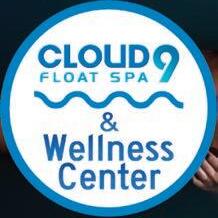

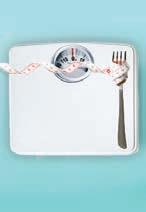

Psychedelics are the future of therapy and mental health! With the appropriate dosage, setting, and intention, patients can have a life-changing experience, and scientific studies have demonstrated the value of psychedelics for the use of treating mood disorders, overcoming addiction, and chronic pain issues.
In fact, according to the National Institute on Drug Abuse, psilocybin (the natural compound in “magic mushrooms”) can produce perceptual changes, altering a person’s awareness of their surroundings, thoughts, and feelings. Treatment with psilocybin has shown promise in research settings for treating a range of mental health disorders and addictions.
Research from Johns Hopkins has shown that treatment with psilocybin relieved major depressive disorder symptoms in adults for up to a month— and a follow-up study of those participants showed that the substantial antidepressant effects of psilocybin, coupled with supportive psychotherapy, may last at least a year for some patients.
There are plenty of negative myths surrounding psychedelics, but that is exactly what they are— myths. Taken responsibly, they are an entirely safe, effective method of reducing pain, addressing mental health issues such as depression, anxiety, and PTSD, and otherwise positively transform your life. While the following is not a comprehensive list, it does provide insight into some of the myths and realities surrounding the use of psychedelics.
• Myth: Psychedelics will always cause you to hallucinate (“trip”).
• Reality: Even taking a full dose will not necessarily cause hallucinations; rather, it can open your mind and make you more connected with yourself and the world around you. And
in fact, many professionals use microdosing (taking very small amounts) for clarity of mind to increase their productivity.
• Myth: Psychedelics are nothing more than party drugs.
• Reality: While some people do use them to enhance their social experiences, psychedelics— as mentioned above—have been scientifically shown to have therapeutic effects on the mind, body, and soul.
• Myth: Psychedelics are illegal, with harmful and addictive effects similar to other drugs.
• Reality: The effects of psychedelics on the human brain are vastly different from highly addictive drugs such as cocaine and alcohol. And for some people, even one dose can dramatically and positively alter their mindset and improve their lives for the long term. In fact, MDMA and psilocybin are currently undergoing clinical trials and are set to be FDA approved by 2024–2026 for clinical use for PTSD and treatment-resistant depression. And these compounds have already been decriminalized in other states, such as Oregon, parts of Colorado, and California.

Ketamine and other psychedelics are known to cause profoundly mystical experiences, which can lead to a sense of oneness and can reveal the sacredness of all things. A resurgence of research is bringing us closer to understanding how these elevated states of consciousness can be used to create happier, more joy-filled lives.

These substances allow people to love themselves more, allow love from others, and let go of trauma. It works best when the intent of the client is clarified and affirmed, and when the healers are loving, present, and supportive without being intrusive and directive.

“Ketamine and other psychedelics are known to cause profoundly mystical experiences, which can lead to a sense of oneness and can reveal the sacredness of all things.”
—Christina Thomas and Charles Patti
Ketamine, like other psychedelics, acts as a gateway to the unconscious mind—but it’s not a true psychedelic. It is a dissociative that causes profound psychedelic experiences. However, until recently, it has been a highly controversial healing modality due to contradictory advice, uncited “experts,” and a heavily stigmatized past.
At MY Self Wellness, we believe there is no one-size fits all dose. Each session is tailored to your individual journey, and we will work with you so you receive the most comfortable experience possible. We believe in empowering our clients every step of the way, and it is your decision on how deep you want to go during each session.
We exist to assist and empower you on your health and wellness journey by combining the healing benefits of ketamine with new lifestyle practices for a full mental reset. We help you get back to wellness so you can live a happy and joy-filled life.
Christina Thomas, President and Founder of MY Self Wellness, knows what it feels like to battle depression, anxiety, and PTSD. After a life-threatening accident, she was prescribed painkillers and mood stabilizers to help suppress accident-related trauma. But these medications made her feel joyless and lost, so she began her own self-healing journey. Using meditation and positive lifestyle changes, she was able to wean off her prescription medications, but it wasn’t until Christina discovered the healing powers of ketamine that she was able to truly let go.

Charles Patti , Chief Executive Officer of MY Self Wellness, has his own experience with self-awareness and healing from trauma and addiction. Like so many others, he found himself lost and unable to cultivate healing that sustained him long-term. It was not until he began to incorporate psychedelics therapeutically that Charles began to see a transformation taking place within himself, and it is now his mission to bring these healing modalities to the collective on a global level.
For more information, visit myselfwellness. center, call 239.908.9958, email info@myselfwellness.center, or visit the office at 3541 Bonita Bay Blvd., #200, Bonita Springs, FL. See ad on page 13 >

“Volunteering at a shelter for homeless people, abandoned animals, kids without parents, and others who are less fortunate or are currently down on their luck, is a good way to establish that sense of purpose.”
 By Dr. Carol L. Roberts, MD
By Dr. Carol L. Roberts, MD
So many people are affected by mental anguish—depression, anxiety, confusion, PTSD, and on and on. What has happened to us?
There are several components that are required to keep us sane and happy. First, we must have decent physical health. We require proper nutrition and exercise to keep the body in good shape and capable of performing all the tasks we need to perform. but that in itself is not enough. Sleep—enough, and the right kind—is another requirement of physical health that is also needed for mental well-being.
One thing missing from so many lives today is a feeling of community. We evolved in clans, tribes, and family groups that looked out for each other. We knew our place and our role. The outliers were valued for their differences, and the leaders and followers mostly kept to their lanes. The group was stronger than the individuals could possibly be on their own. The world was a dangerous place for an isolated human. And so it is today.
For the past 100 years, the trend has been toward individualism. “It’s all about me” seems to be the mantra. Kids are taught they can do
whatever they want and be whomever they wish. But the myth of the rugged individual is just that—life is a team sport, and we don’t respect that enough today. Asking for help is a blessing, for you and for the person who is asked.


Another required aspect of positive mental health is a deep connection to the natural world . How many people grow up in a concrete jungle, with no trees, little grass, no babbling brooks or mountain air to fill their lungs? Their world is all the poorer for it. Their psyche is unprotected by the spirits of the forest, the ocean sprites, the creatures great and small who are part of the real world. Our substitute world is so artificial, so manufactured, all to get us to buy stuff we don’t need and will never be able to fill the hole in our hearts that is there in all of us.
Purpose is required, a sense that your life has meaning —not just to bring home a paycheck at the end of the week, but to feel a deep sense that your life is important. Dedicating at least a part of your time to helping others is a way to cultivate
—Dr. Carol Roberts, MD
that sense. Volunteering at a shelter for homeless people, abandoned animals, kids without parents, and others who are less fortunate or are currently down on their luck, is a good way to establish that sense of purpose.
Love!



Last, but of course not least, is to feel love in your heart . So many suffer damage to the heart (metaphorically as well as physically) from which they never recover. A closed heart hurts the mind and must be reopened if there is to be true health and happiness. This doesn’t have to be romantic love—that’s fine for certain times and certain people—but opening to the suffering of your fellow man is a form of love (agape) that is cruelly missing for many of us.
Therapy can help, time in nature can help, having a pet can help. So can the use of psychedelics, such as mushrooms, ketamine, MDMA, LSD, and all the tools, many of which have been used for millennia but have been banned from our repressive culture. In the old days, the entire tribe would have participated on a regular basis in sacred ceremonies using these substances, which they would all experience together. Today we are fortunately regaining access to these phenomenal mind- and heart-opening substances.
We mustn’t be afraid to confront our demons— the ingrained cultural ideas of who we are supposed to be that get in our way of actually being complete and fulfilled. Mental health is our right, but so many don’t have it. Do your part, find it for yourself, love yourself AND your fellow human AND the natural world. Start by working on the first component above that seems most doable to you. Start somewhere, start anywhere. The world needs you healthy!
Dr. Carol L. Roberts, MD, is medical director at Naples Center for Functional Medicine and author of Good Medicine: A Return to Common Sense . Dr. Roberts has practiced functional, integrative, and holistic medicine for nearly 30 years. For more information or to schedule an appointment, please call 239.649.7400 or visit NaplesCFM.com.







See ad on page 21 >

















 By Dr. John Jaquish, PhD
By Dr. John Jaquish, PhD
Have you ever thought that the love for a mother could help diminish the physical pain of millions of people? This is a question frequently asked of Dr. John Jaquish, PhD. Here is his story:
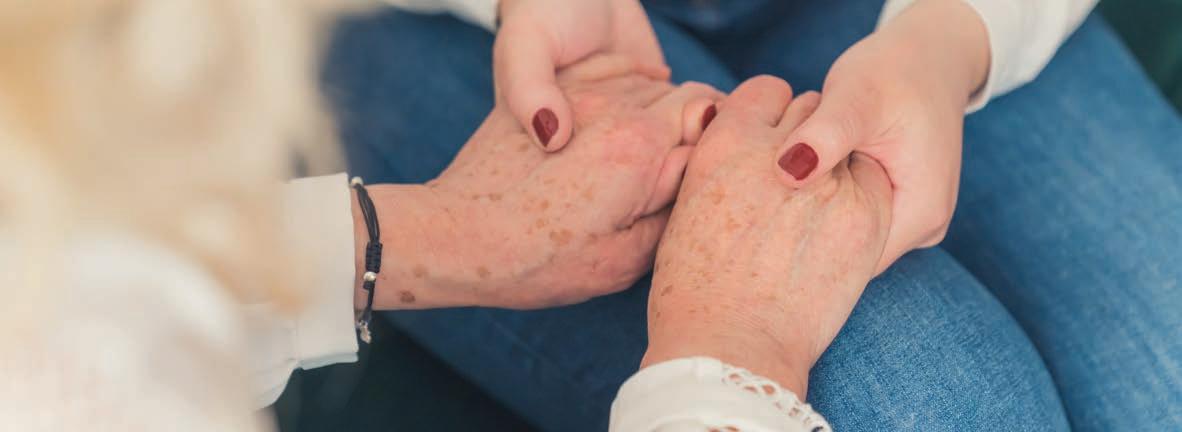
“Like most university students, I came home from school one weekend hoping my mother would be thrilled to do my laundry and feed me. I suppose most kids worried about finals, papers they needed to write, thinking they are the center of the universe, and I was no different. But on this day, something was off when I walked into the kitchen. My Mom looked so sad. Suddenly I wasn’t hungry anymore, and I forgot all about my laundry. I asked her what was wrong…. She told me that she had been diagnosed with osteoporosis, and she was worried that all the outdoor activities she loved would have to come to an end. She also knew there was up to a 25% chance of death within one year of a hip fracture, over the age of 50. And that statistic is unnerving.
Seeing a parent in pain is one of the worst experiences in life. I told her I was going to read about this bone dysfunction and learn more so I could help her. I was very motivated and did not have many limiting beliefs about what you can achieve through science since my father is a scientist that worked for NASA and developed the first moon rover.
As I began to learn about bone density loss over the course of four years of research, I came to the conclusion that this dysfunction was a result of lack of use, as opposed to a natural part of aging (as many mistakenly think).
Well, if bone is not being used to the appropriate levels, let’s figure out how to use it, right? I identified research studies that showed the highest levels of bone density were the result of high impact, and that’s why gymnasts are the group of athletes who




have the strongest bones. Now I knew that impact, while very beneficial, was also dangerous. This brought light to the new research question: How do I create a device that gives the benefit of impact to bone without the risk of injury?
This was where Skeletal Strength therapy was born. I designed a medical device that would place loads on the skeletal system at similar levels that impact does, but comfortably and without risk of injury. This device allowed the users to load bones using their own comfort as a guide guaranteeing a greater level of safety.

The results of bone density improvements were also seen in research, ranging from 7% to 16% gains, which are changes that can bring patients out of diagnosis levels of osteoporosis. These are the results my mother saw as she began using the device and returning to the bone density of a 30-year-old in her early 70s. This took her 18 months to do and, much to her appreciation, without side effects.”

The device that was developed by Dr. John Jaquish about 10 years ago is now available through OsteoStrong, a U.S.-based company with over one hundred franchises in the U.S., Europe, and Australia. In the last six years, over 50,000 people have seen benefits from OsteoStrong’s Skeletal Strength Program.

OsteoStrong is a science-backed system for strengthening bones, joints, and muscles. Sessions are short, painless, and results are measurable and happen quickly. OsteoStrong Naples Vanderbilt is located at The Shoppes at Vanderbilt and offers a free session. Contact them at 239.788.1043 or www.osteoct.com.
See ad on page 39 >
“I designed a medical device that would place loads on the skeletal system at similar levels that impact does, but comfortably and without risk of injury. This device allowed the users to load bones using their own comfort as a guide guaranteeing a greater level of safety.”
— By Dr. John Jaquish, PhD
Saturdays: April 1, May 6, June 3
Regenerative/ Cellular Therapy
12:00–1:00 pm, Free Learn about regenerative medicine treatments, including stem cell allografts combined with other natural treatments. How these treatments may help conditions such as knee pain, back pain, and peripheral neuropathy.


At Feel Amazing Institute
3031 Airport-Pulling Rd., Naples, FL 34105 Register by calling 239.330.1000
Tuesday, April 11
Your Immune System
12:30–1:30 pm, Free
This online webinar is presented by Jenni Berman, PA-C, CPT, CNS, CICI and owner of Berman Health and Wellness. We are going to spend the hour discussing how YOU are in control of the strength of your immune system and fighting viruses. You will receive actionable tips on how you can improve your health one day and one step at a time. You are in control!
Online Webinar Register by emailing jenni@bermanwellness.com
Phone: 239.431.0232

www.essentialnaples.com



Tuesdays: April 18, May 16, June 20
Move More and Ache Less 9:00 am and 3:00 pm, $50 Come learn how to ease pain and move your body easier so that you live a life free of pain pills and dangerous surgery! You’ll discover the most common causes of aches and pains that you attribute to “getting old” and learn simple natural tips to reverse it!
Berman Physical Therapy
501 Goodlette Rd N, C-100 Naples, FL 34102 Register by calling 239.431.0232 or email drberman@bermanpt.com

Wednesdays: April 19, May 17, June 21
Increase Power and Distance O the Tee
1:00 pm and 3:00 pm, $100
Come learn how to generate more power with your core and glutes so that you can increase distance off the tee with ease! This workshop is specifically for aging golfers who have lost significant distance off the tee in the past 5 years.
Berman Golf 24850 Old 41 Rd., #8 Bonita Springs, FL 34135 Register by calling 239.431.0232 or email distance@bermangolf.com
Mondays: April 24, May 22
Wellness Workshop for Beginners
6:00–7:00 pm, Free Peter and Susie Bagwell have been using essential oils for over 20 years and help their customers with cutting edge natural solutions. You will learn about bioavailable supplements, exclusive home care products, and how to reduce home toxicity. This workshop will show y ou everything you need to get started.
I Love Oils, Inc. Training Ctr. 17030 Alico Commerce Ct #303 Fort Myers, FL 33967 Register by calling 586.604.3500 or email susie@iloveoils.com
Do you have an event (virtual or live) that you want Essential Naples readers to know about? Reach out to us at calendar@essentialnaples.com for information on listing your event and sponsorships. Event listings are in print and online. We also accept classified listings.
www
OsteoStrong Naples Vanderbilt
Naples
239.317.6084
www.osteoct.com
OsteoStrong is an innovative approach to bone health. Our safe, science-based system is proven to improve bone density while strengthening your joints and muscles. It is fun and safe for all ages. The result is a more resilient body and a more confident you. Get back to living your life.
Your CBD Store
Naples and Marco Island
239.331.8073
NaplesFL.CBDrx4u.com
Peaceful Summit Counseling
Jennifer Vear Hoy, MS, MS Naples • 239.307.4708
www.peacefulsummitnaples.com
jennifervearhoy1@gmail.com
Jennifer Vear Hoy has spent over 20 years in the corporate worldas a corporate strategist operating her firm in Chicago, for which she earned her first master’s degree in Management and Organizational Behavior. She has since relocated to Naples, and after the death of her husband, she realized firsthand the need for professional and compassionate counseling in the Naples area. She went back to school and earned her second graduate degree in Clinical Mental Health Counseling.Her passion is helping others live the life they were meant to live.
We are the only dedicated CBD store and carry only the top products. We carry CBD water solubles, CBD tinctures, CBD edibles, CBD capsules, CBD vape products, CBD pet care, CBD skin care, and CBD topical creams. Our products are derived from 100% organic, non-GMO industrial hemp. Stop in!
Josephine Perez, DMD
Naples
239.692.9623
www.puredentalnaples.com
Dr. Josephine Perez, DMD, has been practicing dentistry for 29 years. She is a graduate of Tufts University School of Dentistry in Boston and interned at New Orleans Coast Guard/Navy Base. Her holistic approach to dentistry encompasses each person’s unique and entire (or whole, therefore holistic) state of physical and emotional well-being. The ability to maintain health through preventive measures and treatments of oral disease is her priority. Dr. Perez focuses on the underlying condition, rather than only treating the symptoms. She tests for biocompatibility to find pathways to reduce inflammation.
Neurocentric Health and Fitness
Naples
617.678.0724
https://neurocentrichealth.boston ildikovarhelyi@me.com
NCHF brings a revolutionary brain-based approach to help achieve optimal health, longevity, and high athletic performance. Personalized programs to educate individuals to control their health using mindfulness, breathing, movement, and sensory re-education. A “fit brain” allows us to think clearly, be alert, have more energy, move with ease without pain, improve balance, and recover from injuries more quickly than using traditional approaches.
Denise A. Pancyrz Naples • 888.848.1763
www.ReverseMyDiabetes.net
Denise@ReverseMyDiabetes.net
The conventional approach to managing type 2 diabetes long term is not effective. Holistic lifestyle coaching helps to reverse the effects of diabetes, guiding you away from counting carbs and diets and leading you to recognize factors that affect your glucose. Lower your A1c, stabilize glucose levels, increase your energy, and lose weight naturally.
Energy Spa
Zel Rau—Owner/Operator
7935 Airport Pulling Rd. 2nd Floor, Suite 214 Naples FL 34109 219.381.9777 • bekind111@yahoo.com
ZelRau.com/book-online
Zel is a Certified Energy Work Practitioner with a profoundly rooted energy background. At the Energy Spa, Zel offers other energy work modalities such as Energy Field Tuning/Clearing, Bio-Well Energy Scans, Crystal Light Therapy, and more. Receiving this type of work can help with many issues we deal with today. Zel offers a 30-minute complimentary session to better learn about her services.
Susie Bagwell • susie@iloveoils.com 17030 Alico Commerce Ct. #303 Fort Myers, FL 34109 586.604.3500 • www.iloveoils.com

Susie Bagwell has been using essential oils for over 20 years and helps her customers with cutting edge natural solutions. Her “Smell ’em Wear ’em Drink ’em” slogan applies to more than just certified pure essential oils. Her dōTERRA brand products also include bioavailable supplements and exclusive home care products.
Wintrust Wealth Management
Nina Azwoir, First Vice President Naples • 239.697.5204










www.nazwoir.wintrustwealth.com
nazwoir@wintrustwealth.com
Nina Azwoir is a licensed Financial Advisor with over 17 years of industry experience in the realm of wealth management, financial planning, and retirement solutions. Nina has the knowledge and perspective to help keep her clients and their financial future on a steady course as they navigate through life and retirement. Her highest priority is her clients and their families. Reach out to Nina for your complimentary financial plan.
Cloud 9 Float Spa
Fort Myers
239.887.4161
www.c9floatspa.com
Floating, also known as Flotation Therapy, has been used for years for its mental, spiritual, meditative, and physical benefits and has a vast amount of published research to support its claims.
HatchPath
4850 Tamiami Trail N, Suite 301, Naples 34103 289.221.7195 • hatchpath.io
hello@hatchpath.io
Where health coaches and clients meet. Customizable coaching within a trusted wellness community.
Theresa Edmunds, CHC
Naples
734.308.7105
theresaedmunds@hotmail.com
Educating clients about all aspects of natural health. Truly healthy food, living chemical-free and detoxing, healthy home, emotional well-being, reducing stress, movement, supplements/homeopathy. Helping you recover, enhance, and protect your health. Providing the foundation that you need to live your best life full of energy and vitality.
Kristina B. Gretouce
239.350.4544
codependencyfreedom.com
Kristina B. Gretouce is a Certified Life and Health and Wellness Coach with over 15 years of experience.






Kristina offers a complimentary 10-minute discovery call. Please contact Kristina at 239.350.4544. 704 Goodlette-Frank Rd N, Naples.
Berman Physical Therapy
Jake Berman, PT, DPT



501 Goodlette Rd N, C-100, Naples, FL 34102 • 239.431.0232 Drberman@bermanpt.com
www.Bermanpt.com
Most people think pain is a normal part of the aging process. We help people age 50+ avoid surgery and pain pills so they can keep active, mobile, and living their best life!
Berman Health and Wellness
Jenni Berman, PA-C, CPT, CNS 501 Goodlette Rd N Unit C202 Naples, FL 34102

239.431.0232
www.bermanpt.com/wellness
Berman Health and Wellness is a Functional Medicine Center who helps individuals reach their goal weight and optimize their gut health, while avoiding needless medications and achieving the highest quality of life imaginable. Our goal is to evaluate the metabolism, gut health, and bloodwork to optimize each aspect of the client.
Healthy Concepts Consulting
Betsy Opyt, RD, LD/N, CDE Naples
239.297.8844
www.healthyconceptsconsulting.com betsy@healthyconceptsconsulting.com
Betsy is a Licensed and Registered
Dietitian as well as a Certified Diabetes Educator, Integrative & Functional Medicine Nutrition Therapist, and RYT200 yoga teacher. She specializes in nutrigenomics, gut health, food sensitivities, detoxing, inflammatory diseases, and longevity living. Betsy is a professional speaker and advocate for healthy living. She is available for individual consultations, group programs, and speaking engagements.
Lee for Lifehealth
Naples • leehartman14@gmail.com 312.208.1698 • leeforlifehealth.com https://www.facebook.com/profile. php?id=100048548046587
Freedom from food without starving! Become your magnificent self beginning with the first element of self-discipline—controlling food and drink. When you do that everything else falls into place—family, business, and mental health. Calm and peaceful happiness result with no cravings taking over your life. Gentle support through your process in 6 or 12 weeks with me.
MY Self Wellness
3541 Bonita Bay Blvd Bonita Springs, FL 34134 239.908.9958 • www.myselfwellness.com info@myselfwellness.center
We get to the root cause of why you are depressed so you no longer have to feel stuck. MY Self Wellness is psychedelic ketamine therapy center, which exists to empower people on their health and wellness journeys so they can live a happier, more joy-filled life.
Microvascular Solutions, LLC

5633 Strand Blvd #312, Naples, FL 34110 239.821.1223 • 239.595.2353
www.microvascularsolutions.com
info@ microvascularsolutions.com
Life is in the blood! Until now, doctors have only been able to measure 1% of your arteries and veins. Now, with GlycoCheck, we can measure the other 99%. This FDA-cleared, state-of-the-art medical device allows us to take a look at the function of your microvascular system before it’s too late.
Nature’s Rite
Onlines • 800.991.7088
www.mynaturesrite.com
Spine, Joint, and Neuropathy Care
Richard A. Hiler, DABCN Naples
239.330.1000 • DrRHiler@aol.com
www.FeelAmazing.com
Oftentimes, to simply inject a joint or nerve with stem cells for pain, inflammation, and degeneration is not enough. Boost regenerative capability and capacity with the addition of ozone, PRP, growth factors, peptides, myoneural therapies, and physical reconditioning.
Chadwick C. Prodromos, MD

Naples and Chicago
847.699.6810 • care@thepsci.org
www.thepsci.com
Dr Prodromos received his MD from the Johns Hopkins Medical School, served a surgical internship at the University of Chicago, his orthopaedic surgery residency at Rush and a fellowship in Orthopaedic Surgery and Sports Medicine at Harvard Medical School and Massachusetts General Hospital. He was a pioneer in surgery of the ACL and served as editor in chief of the first and only comprehensive textbook on the ACL for orthopaedic surgeons.
Precision Robotics
Theresa Edmunds, CHC, RPT Naples 239.778.6842
www.precisionroboticstherapy.com info@precisionroboticstherapy.com
This innovative technology uses the static pressure of the robotic arm to release muscle tension, lengthening muscles back to their original state. This reduces pressure on joints/ bones and increases flexibility. Clients report pain resolution, greater mobility, recovery from injury, increased range of motion and a general feeling of well-being.
Candice Rosen RN, Health Counseling
Candice Rosen, RN www.candicerosenrn.com
Candice P. Rosen is a registered nurse, social worker, nutritionist, health counselor, and author. She is the creator of The Pancreatic Nutritional Program and Data-Driven Fueling. She has spent her life’s work focused on improving the wellness of both her clients and her community. She advocated for preventative medicine, improved disability access, promoted maternal and infant health, and worked to bring awareness to the global obesity and diabetes epidemics.
Berman Golf
Jake Berman, PT, DPT 501 Goodlette Rd N, C-100, Naples, FL 34102 • 239.431.0232 distance@bermangolf.com www.Bermangolf.com
Most golfers think a deteriorating golf game is a normal part of getting older. We help aging golfers increase distance off the tee, shoot more consistently, and play more frequently!
